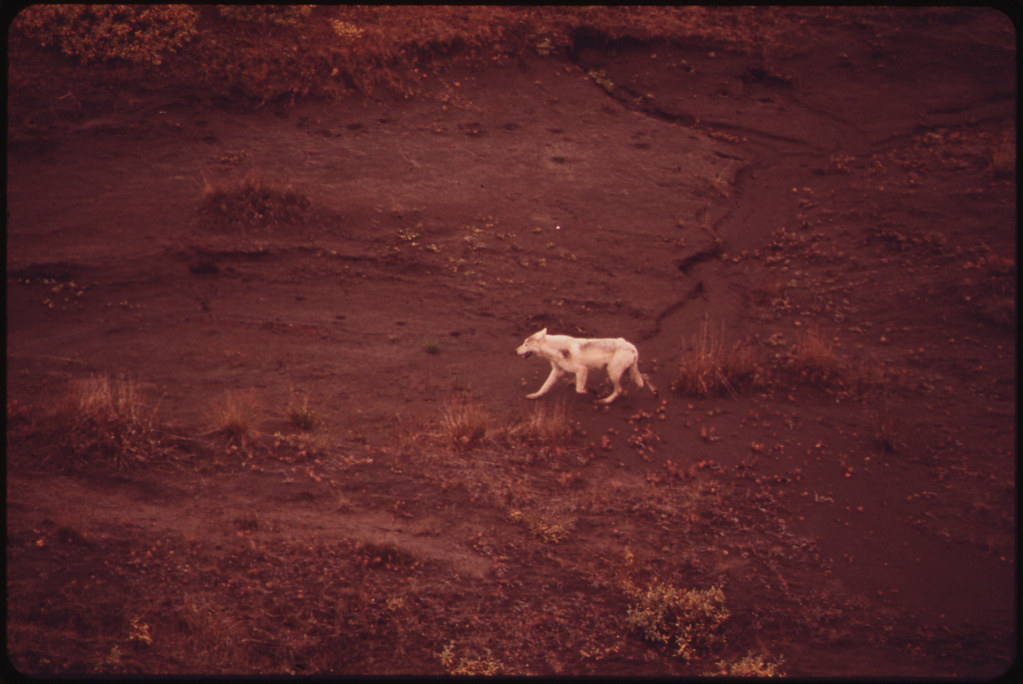
Siler-White Wolf in the Atigun Valley, along the Alaska Pipeline Route: photo by Dennis Cowals for the Environmental Protection Agency Project DOCUMERICA, August 1973 (US National Archives)
Jorge Luis Borges: Un lobo
Furtivo y gris en la penumbra última,
va dejando sus rastros en la margen
de este río sin nombre que ha saciado
la sed de su garganta y cuyas aguas
no repiten estrellas. Esta noche,
el lobo es una sombra que está sola
y que busca a la hembra y siente frío.
Es el último lobo de Inglaterra.
Odín y Thor lo saben. En su alta
casa de piedra un rey ha decidido
acabar con los lobos. Ya forjado
ha sido el fuerte hierro de tu muerte.
Lobo sajón, has engendrado en vano.
No basta ser cruel. Eres el último.
Mil años pasarán y un hombre viejo
te soñará en América. De nada
puede servirte ese futuro sueño.
Hoy te cercan los hombres que siguieron
por la selva los rastros que dejaste,
furtivo y gris en la penumbra última.

White female wolf in the Atigun Valley, Alaska. This wolf dens in the riverbank of the Atigun inside the main valley about five miles south of Galbraith Camp. She roams at least twenty miles a day in search of food, from the main valley den into the gorge and then back to the valley proper: photo by Dennis Cowals for the Environmental Protection Agency Project DOCUMERICA, August 1973 (US National Archives)
Jorge Luis Borges: A Wolfva dejando sus rastros en la margen
de este río sin nombre que ha saciado
la sed de su garganta y cuyas aguas
no repiten estrellas. Esta noche,
el lobo es una sombra que está sola
y que busca a la hembra y siente frío.
Es el último lobo de Inglaterra.
Odín y Thor lo saben. En su alta
casa de piedra un rey ha decidido
acabar con los lobos. Ya forjado
ha sido el fuerte hierro de tu muerte.
Lobo sajón, has engendrado en vano.
No basta ser cruel. Eres el último.
Mil años pasarán y un hombre viejo
te soñará en América. De nada
puede servirte ese futuro sueño.
Hoy te cercan los hombres que siguieron
por la selva los rastros que dejaste,
furtivo y gris en la penumbra última.

White female wolf in the Atigun Valley, Alaska. This wolf dens in the riverbank of the Atigun inside the main valley about five miles south of Galbraith Camp. She roams at least twenty miles a day in search of food, from the main valley den into the gorge and then back to the valley proper: photo by Dennis Cowals for the Environmental Protection Agency Project DOCUMERICA, August 1973 (US National Archives)
Grey and furtive in the final twilight,
he lopes by, leaving his spoor along the bank
of this nameless river that has quenched the thirst
of his throat, the water that repeats no stars.
Tonight, the wolf is a shade who runs alone
and searches for his mate and feels cold.
He is the last wolf in all of Angle-land.
Odin and Thor know him. In a commanding
house of stone a king has made up his mind
to put an end to wolves. The powerful
blade of your death has already been forged.
Saxon wolf, your seed has come to nothing.
To be cruel isn’t enough. You are the last.
A thousand years will pass and an old man
will dream of you in America. What use
can that future dream possibly be to you?
Tonight the men who followed through the woods
the spoor you left are closing in on you,
grey and furtive in the final twilight.
Jorge Luis Borges (1899-1986): Un Lobo (A Wolf), from Los conjurados, 1985, translated by Robert Mezey
In Venezuela, dogs' lives are getting harder. Venezuelans struggling to feed their families let alone pets amid an unprecedented economic crisis are increasingly dumping scrawny animals in streets, parks and makeshift shelters. At one dilapidated sanctuary in the hills outside Caracas, hundreds of skinny dogs bark and claw through wire mesh to scavenge for food in the streets and forest nearby. "The crisis has hit hard," said Maria Arteaga, 53, who began looking after stray dogs in her own home before founding the shelter in Los Teques. "People are abandoning their dogs because they can't afford food and because they're leaving the country." Venezuelans themselves are suffering shortages of food and medicines, and are finding salaries wrecked by triple-digit inflation. A 20 kilogram bag of dog food costs around $50 at the black market exchange rate, nearly double its price in the United States and out of reach for many in Venezuela where the minimum wage is $23-a-month. Enfermera (nurse), seen above, was given that name because she was rescued by a nurse outside a hospital. "She suffered a stroke and although she never recovered completely, she is a very good guard dog. She lives outside of the shelter and when someone approaches, she starts barking," said Maria Silva, who takes care of dogs at the shelter.: photo by Carlos Garcia Rawlins via Reuters PIctures @reuterspictures, 7 September 2016
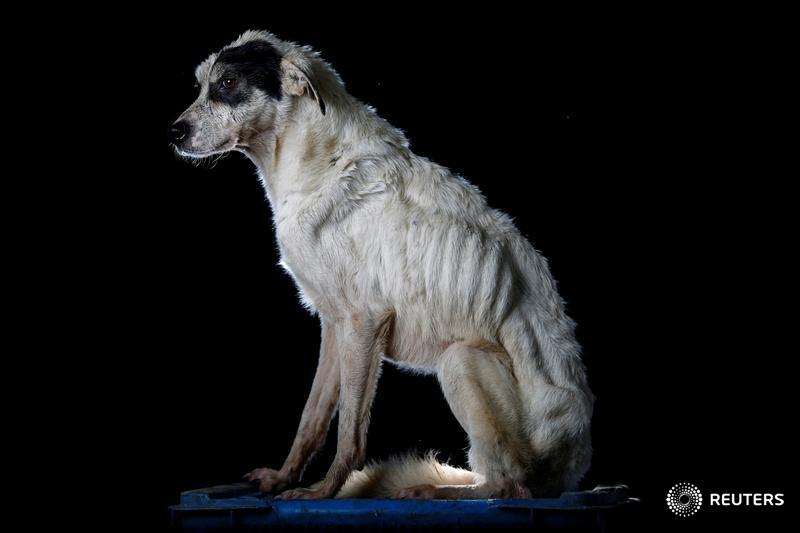
Mancha (stain) was given that name because of the black spot on
her face. "She has bitten almost everybody in the shelter. She was not
loving, on the contrary, she fought everyone and at mealtime nobody
could be near her," said Maria Silva. Mancha died the week
after the photo was taken.: photo by
Carlos Garcia Rawlins via Reuters PIctures @reuterspictures, 7 September 2016
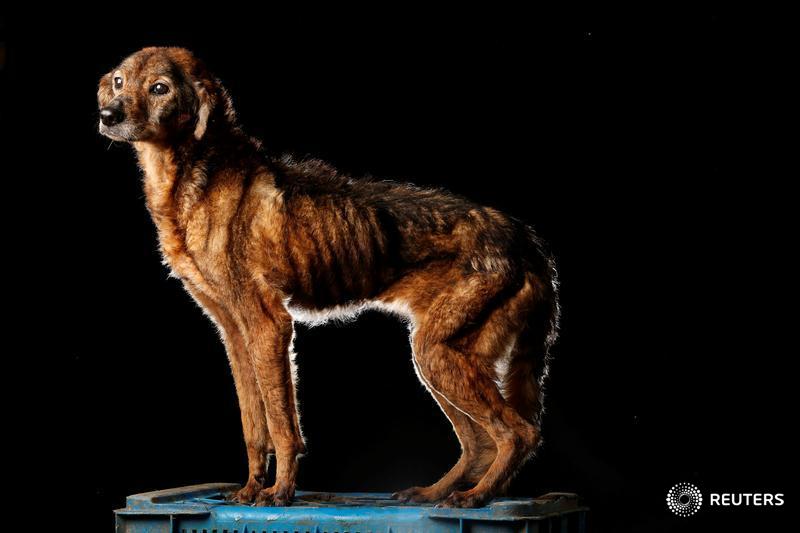
Pichurra is very old and has been at the shelter for a long time. "She is extremely calm, never fights with anyone, nor does she bark. In fact, at mealtimes the volunteers have to be very alert, because if any other dog steals her food she would not complain," said Maria Silva.: photo by Carlos Garcia Rawlins via Reuters PIctures @reuterspictures, 7 September 2016

Pintica (spotty) was given that name because of her skin. "She was
the posh girl of the shelter, she didn't like to get her feet wet. All
dogs used to attack her and because of that, she did not like to come
out of her home," said Maria Silva. Pintica died the week
after the photo was taken.: photo by
Carlos Garcia Rawlins via Reuters PIctures @reuterspictures, 7 September 2016
Saxon wolf, your seed has come to nothing
Mike Ashley, billionaire and founder of Sports Direct International Plc, places his wallet and a wad of 50 pound banknotes as he demonstrates the security checking procedures during a tour of the company’s warehouse following the company’s annual general meeting (AGM) at their headquarters in Shirebrook, U.K.: photo by Chris Ratcliffe/Bloomberg, 7 September 2016
Mike Ashley, billionaire and founder of Sports Direct International Plc, places his wallet and a wad of 50 pound banknotes as he demonstrates the security checking procedures during a tour of the company’s warehouse following the company’s annual general meeting (AGM) at their headquarters in Shirebrook, U.K.: photo by Chris Ratcliffe/Bloomberg, 7 September 2016

INDIA - Vendors sit with their goats for sale at a
livestock market in New Delhi. By @sajjadkmr #AFP: image via AFP Photo
Department @AFP, 7 September 2016
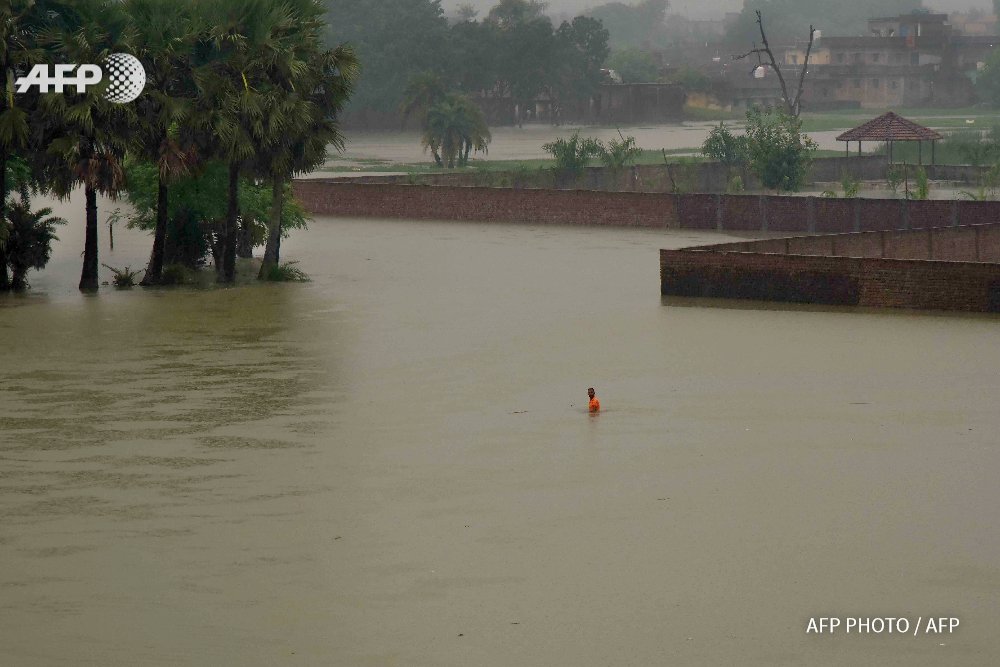
INDIA - A man walks through the floodwaters behind Mahabodhi Temple following heavy rains in Bodhgaya. By @AFPphoto: image via Frédérique Geffard @fgeffardAFP, 7 September 2016
Lightning flashes above skyscrapers in Central Business District during a rainstorm in Beijing: photo by Andy Wong/AP, 7 September 2016
Lightning flashes above skyscrapers in Central Business District during a rainstorm in Beijing: photo by Andy Wong/AP, 7 September 2016
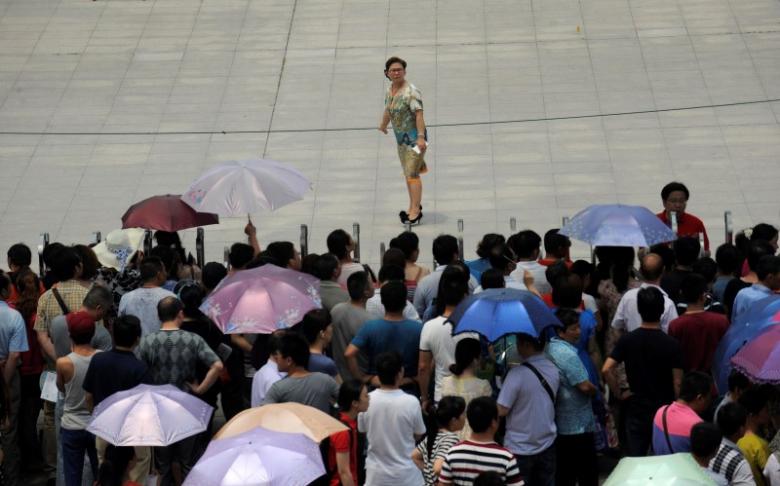
EXCLUSIVE: ACT partners with test-prep firms, despite signs of cheating in Asia: image via Reuters Top New @Reuters, 7 September 2016
US President Barack Obama drinks from a fresh coconut along the banks of the Mekong River in the Luang Prabang, Laos: photo by Carolyn Kaster/AP, 7 September 2016
US President Barack Obama drinks from a fresh coconut along the banks of the Mekong River in the Luang Prabang, Laos: photo by Carolyn Kaster/AP, 7 September 2016
British artist Anthony Gormley
poses for a photograph next to his artwork entitled ‘Object, 199′, a
life-size cast-iron sculpture cast from the artist’s body and hung from
the ceiling of the National Portrait Gallery in London, England: photo by Carl Court, 7 September 2016
British artist Anthony Gormley
poses for a photograph next to his artwork entitled ‘Object, 199′, a
life-size cast-iron sculpture cast from the artist’s body and hung from
the ceiling of the National Portrait Gallery in London, England: photo by Carl Court, 7 September 2016
Light from a forest fire colours the sky red near the village of Entrimo, northwestern Spain: photo by Miguel Riopa/AFP, 8 September 2016
Light from a forest fire colours the sky red near the village of Entrimo, northwestern Spain: photo by Miguel Riopa/AFP, 8 September 2016
Light from a forest fire colours the sky red near the village of Entrimo, northwestern Spain: photo by Miguel Riopa/AFP, 8 September 2016
Mondo Cane
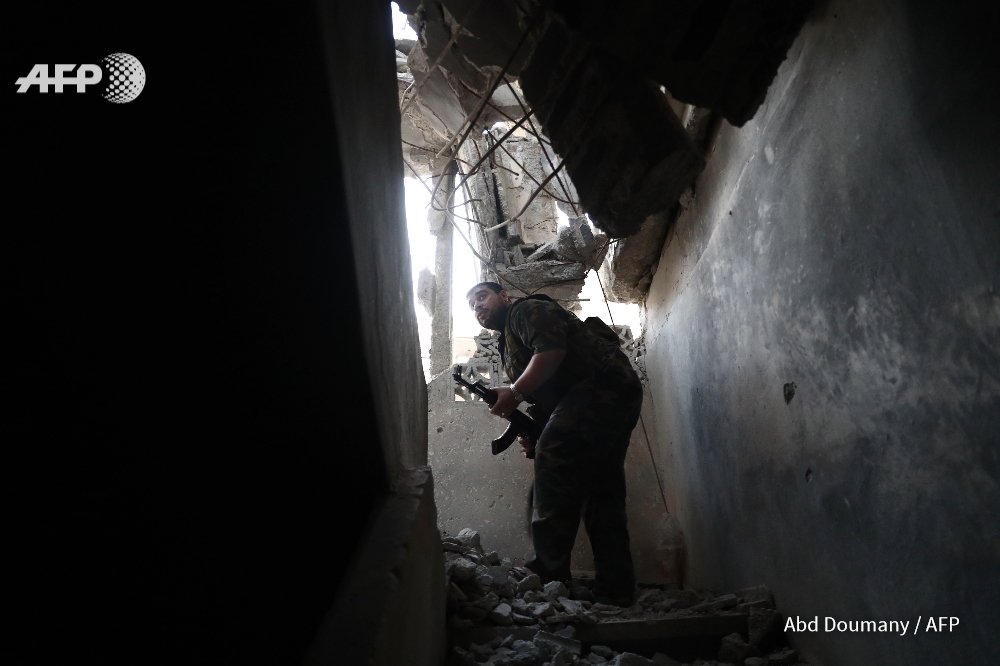
SYRIA - A rebel fighter inspects a damaged building near the front line
in Jobar. By @AbdDoumany #AFP: image via AFP Photo Department @AFPphoto,
7 September 2016
#Russian
warplanes targeted besieged neighborhoods of #Aleppo City dozens of
raids now and committing massacres against civilians: tweet via THAER MOHAMMED @THAER MOHAMMED, 7 September 2016
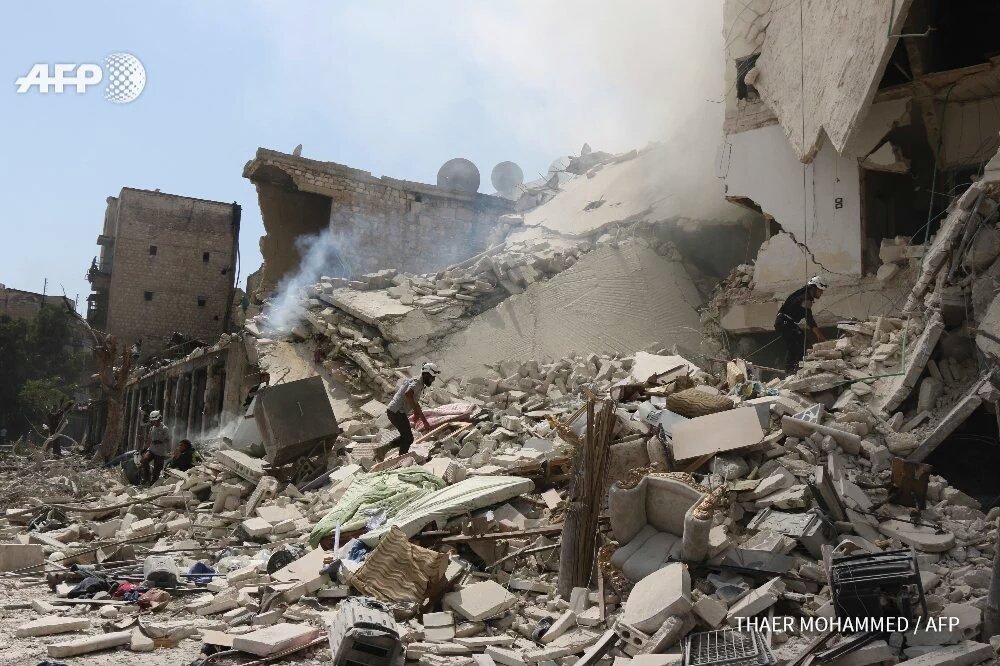
#SYRIA - Rescue workers search for victims through the rubble during barrel bomb attack in #Aleppo: image via THAER MOHAMMED @THAER MOHAMMED, 27 August 2016
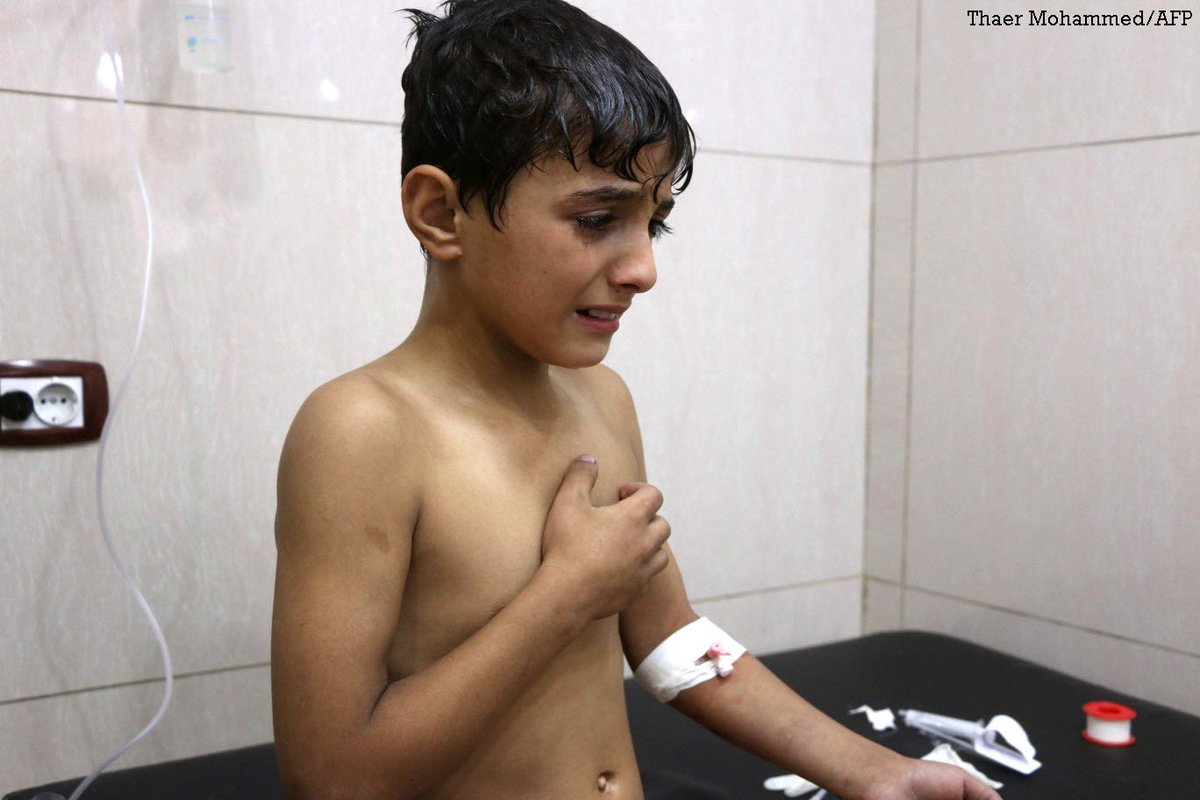
#Syrians struggle to breathe after barrel bombs are dropped on #Aleppo #Syria @THAER MOHAMMED @AFPphoto: image via SundayTimesPictures @STPictures, 7 September 2016
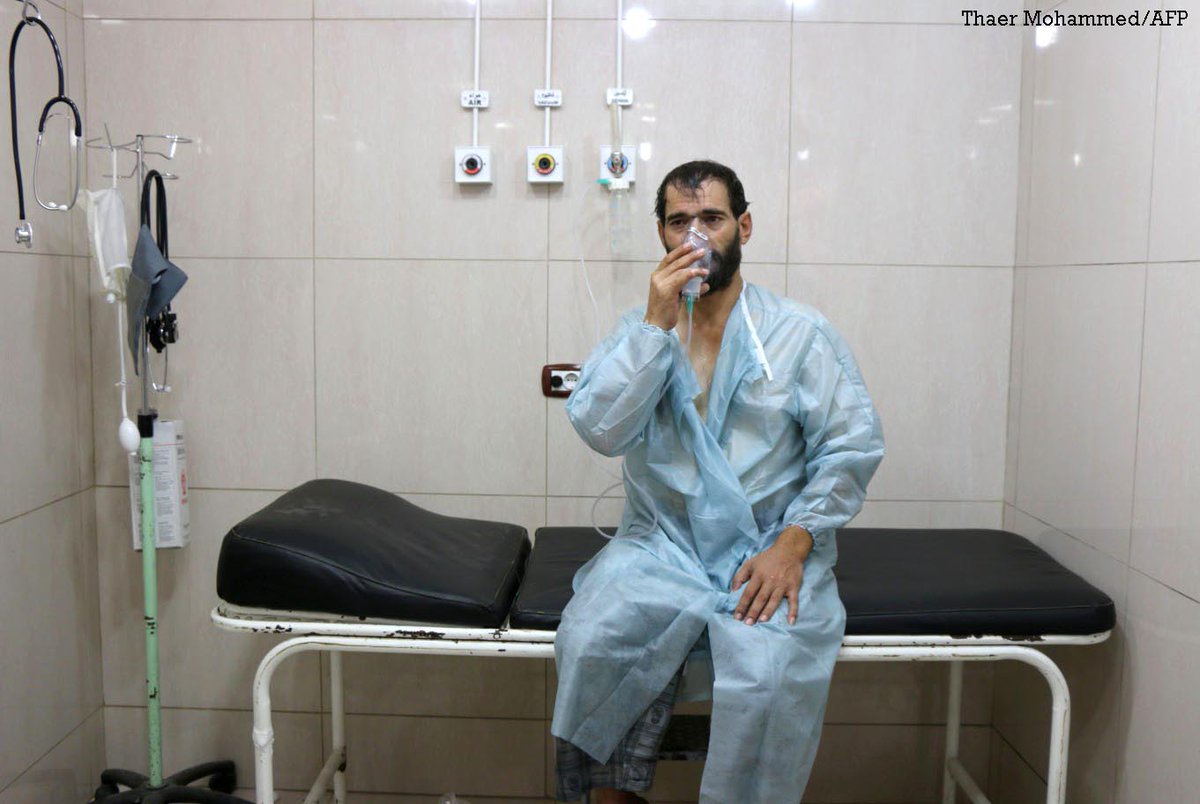
#Syrians struggle to breathe after barrel bombs are dropped on #Aleppo #Syria @THAER MOHAMMED @AFPphoto: image via SundayTimesPictures @STPictures, 7 September 2016

#Syrians struggle to breathe after barrel bombs are dropped on #Aleppo #Syria @THAER MOHAMMED @AFPphoto: image via SundayTimesPictures @STPictures, 7 September 2016
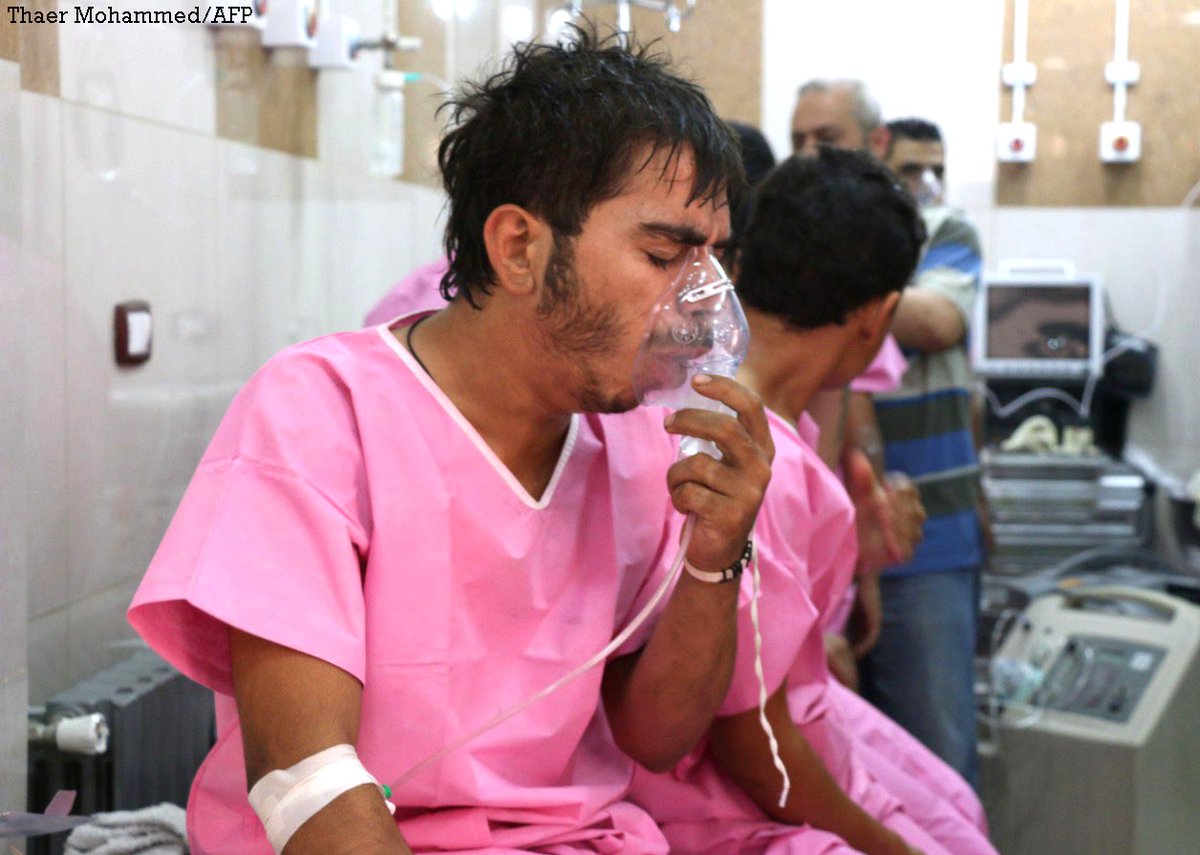
#Syrians struggle to breathe after barrel bombs are dropped on #Aleppo #Syria @THAER MOHAMMED @AFPphoto: image via SundayTimesPictures @STPictures, 7 September 2016
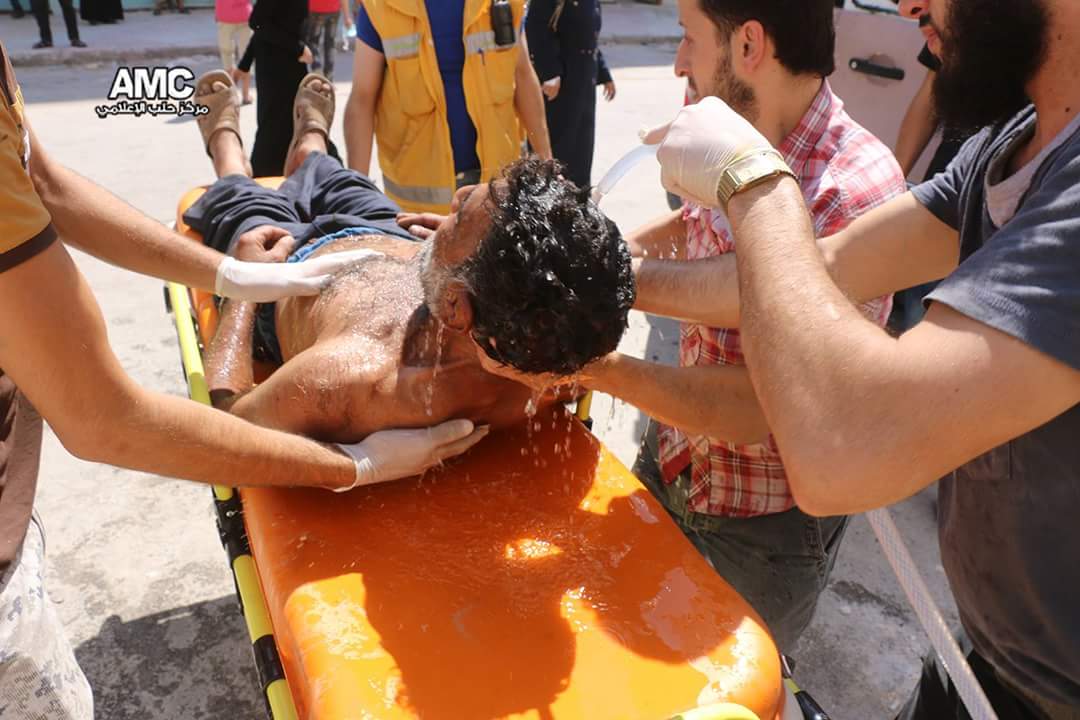
More than 70 injured poisonous chlorine gas internationally banned today in #Aleppo City: image via THAER MOHAMMED @THAER MOHAMMED, 6 September 2016

More than 70 injured poisonous chlorine gas internationally banned today in #Aleppo City: image via THAER MOHAMMED @THAER MOHAMMED, 6 September 2016
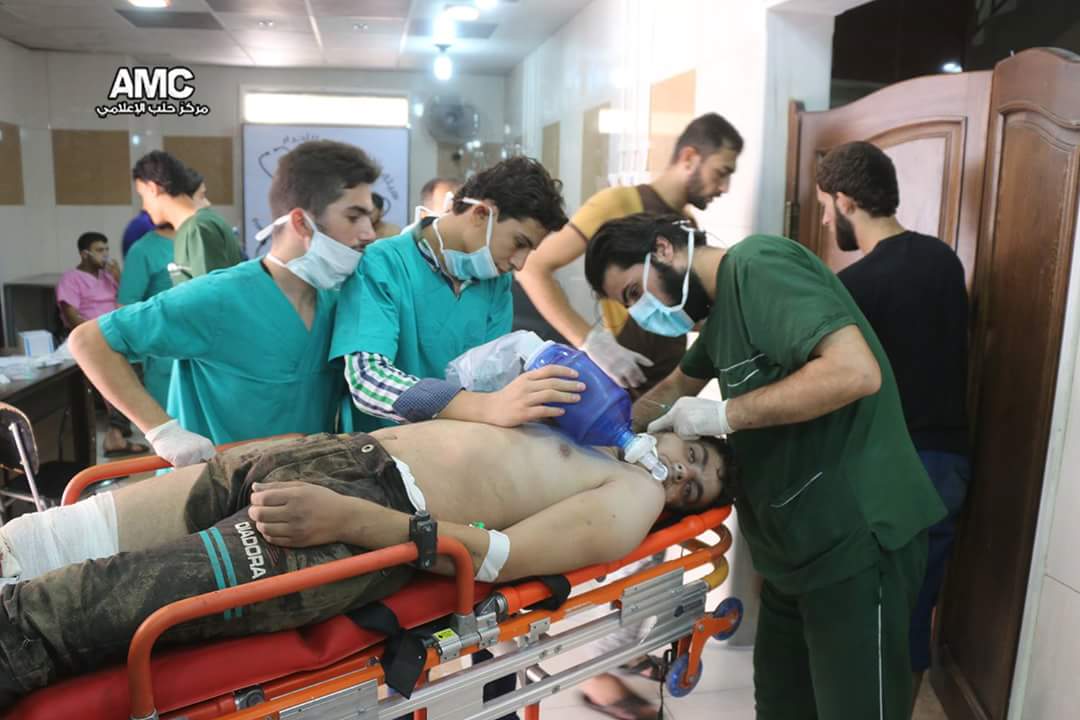
More than 70 injured poisonous chlorine gas internationally banned today in #Aleppo City: image via THAER MOHAMMED @THAER MOHAMMED, 6 September 2016
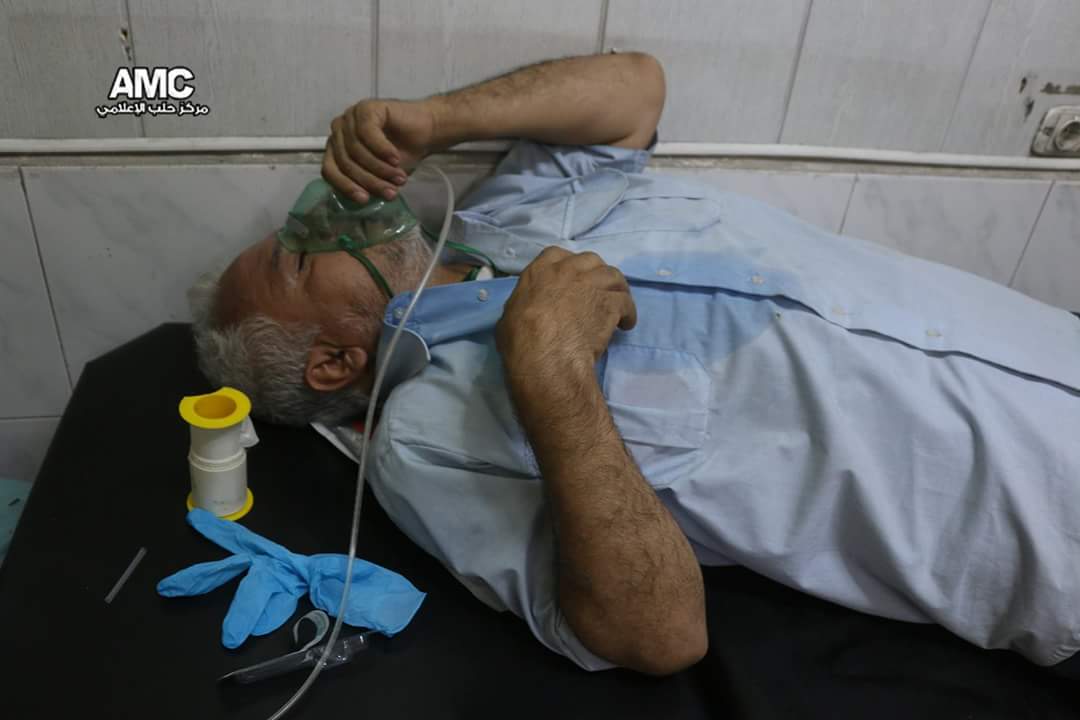
More than 70 injured poisonous chlorine gas internationally banned today in #Aleppo City: image via THAER MOHAMMED @THAER MOHAMMED, 6 September 2016
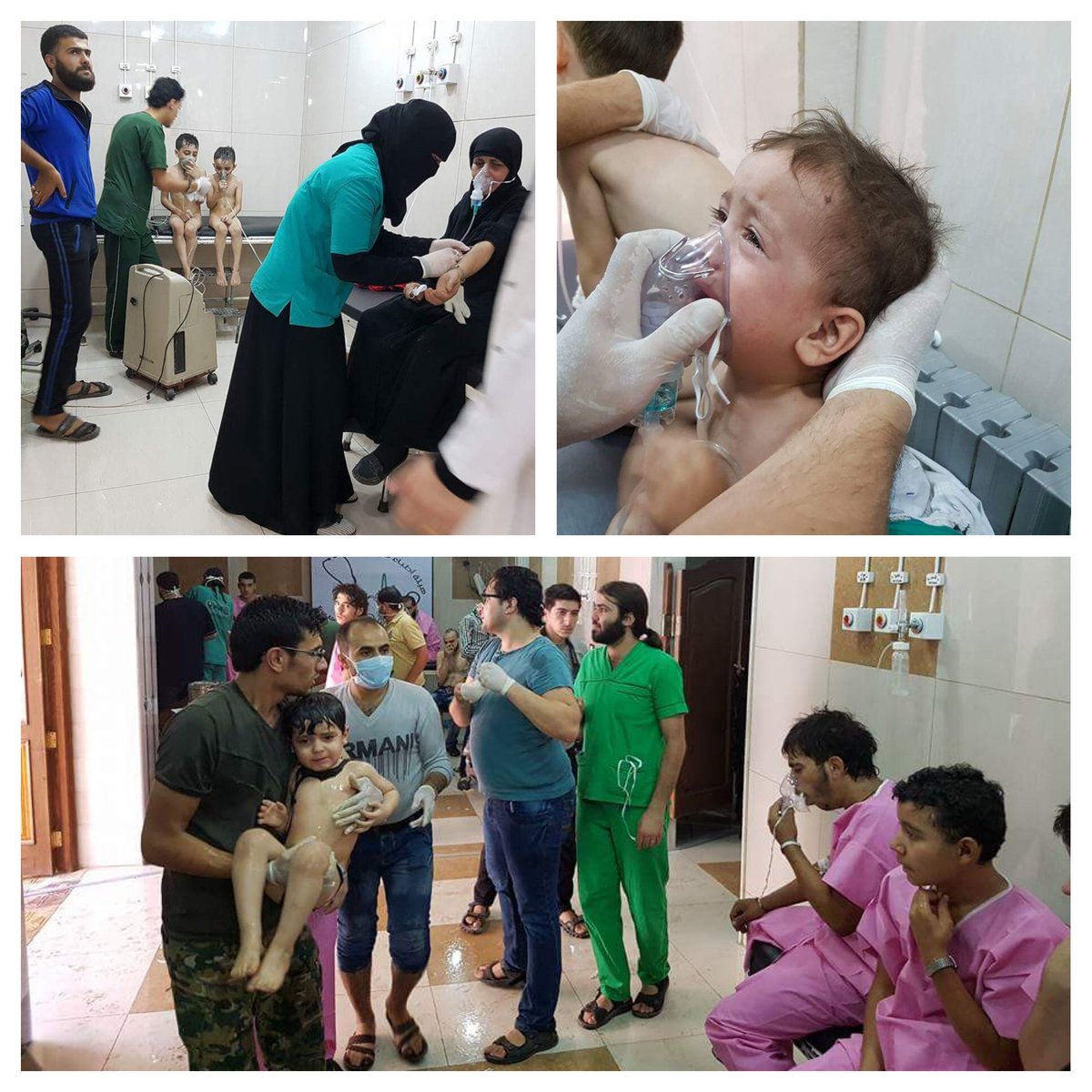

Another reported use of chlorine gas in besieged eastern #Aleppo City. Casualties include many children.: image via SAMS Verified account @sams_usa, 6 September 2016
Kashmir: "Now that element of fear is gone... The young generation is really controlling things on the street"
Parvez Imroz, the founding president of the JKCCS group: photo by Faisal Khan/Al Jazeera, 7 September 2016
Q and A: 'Element of fear is gone' for Kashmir's youth: Parvez Imroz, a leading rights activist in Kashmir, speaks to Al Jazeera on the current unrest and its fallout: Majid Maqbool, Al Jazeera News, 7 September 2016
Srinagar - Indian-administered Kashmir has been in turmoil since July 8 when rebel commander Burhan Wani was killed by Indian security forces.
More than 70 people have been killed and thousands wounded in the ensuing unrest, including hundreds with serious eye injuries from pellets guns fired by Indian security personnel, who have faced criticism for using excessive forces against the protesters.
The disputed region has mostly remained under a curfew since the unrest began.
An all-party delegation from New Delhi concluded a recent visit to the Himalayan region but no breakthrough could be reached on how to end nearly two months of deadly violence.
Al Jazeera spoke to Parvez Imroz, a leading human rights activists in the Kashmir valley, about the situation in the region.
Imroz is the founding president of the Jammu Kashmir Coalition of Civil Society (JKCCS), which runs advocacy campaigns, documents rights violations and provides legal assistance to victims.
Al Jazeera: How do you see the Jammu and Kashmir state government's handling of the widespread protests in Kashmir following the killing of Hizbul Mujahideen commander Burhan Wani?
Imroz: Everything is controlled by the police and Central Reserve Police Force (CRPF) [paramilitary forces] on the streets here. The state government looks isolated as more Border Security Force (BSF) troops have been called in.
The state government doesn't seem to have any say in the decision making. They're struggling to have some face saving now, given the rising number of deaths and pellet- and bullet-injured people.
It is the Indian home ministry and defence ministry that is controlling things here and calling all the shots.
Al Jazeera: How do you see the role of Jammu and Kashmir Chief Minister Mehbooba Mufti?
Imroz: The present civilian uprising and widespread protests are beyond the expectations of government here. After [the] 2010 uprising, with the passage of time, the anger intensified. And it has been an unexpected uprising this time around.
The only fear [the] government of India had was that they never wanted people to come out in large numbers on the streets in Kashmir like they did in 2008 and 2010. But it's happening again.
The politicians of ruling and opposition parties are also making contradictory statements, which further damages their credibility among people in Kashmir.
Al Jazeera: How is the current uprising different from the 2008 and 2010 mass protests?
Imroz: It can be seen as a continuation of the 2008 and 2010 uprisings. About 600,000 troops are not here to fight a few hundred militants but to control the population.
The People’s Democratic Party-Bharatiya Janata Party (PDP-BJP) coalition government has been on the offensive here since it came to power with agendas such as proposed Sainik [army] colonies, separate townships for [displaced] Kashmiri Pandits etc.
People here had a feeling that the local PDP party in coalition with Hindu nationalist BJP had decided to go ahead with their divisive plans and policies.
Also, the treatment meted out by the BJP government to minorities elsewhere, including Muslims, weighed heavily on the minds of people here. The jingoistic corporate media further angered people here.
Al Jazeera: Do you think the prolonged period of curfews, snapping of mobile and internet services and other restrictive measures enforced by the government has further angered people?
Imroz: The more restrictions are enforced, and the more army and other paramilitary forces are called in, it is in a way the success of people's struggle here.
The government doesn't really know what to do and how to control protests.
The state has become more vehement, firing bullets and pellets on unarmed people. But, despite all this use of force, people are organising these protests well, which was not the case in the early 1990s.
It was more of an emotional outburst back then.
And many young people who are now on the streets have not seen the
fear and terror that was instilled by the government forces in early
1990s.
Now that element of fear is gone.
Al Jazeera: What do you think has been the government's response to the protests?
Imroz: The Indian troops here have realised that
they are working in a territory where people are hostile to them and
they are seen as an occupation forces.
And there is no accountability for them when they are involved in human rights violations here.
Lot of inquiries and probes were ordered in the past but then nothing happened.
Here the army, CRPF, and police force is convinced that they will get away after shooting bullets and pellets at unarmed people.
They have appointed commission of inquiries in the past for human
rights violations but finally nothing substantial came out of those
enquiries.
On the contrary, those involved in human rights abuses and killings in Kashmir have been rewarded and awarded by the state.
Al Jazeera: The CRPF recently informed the High
Court that there will be more fatalities if pellet guns are banned. Do
you think the use of pellet guns in Kashmir should be completely
stopped?
Imroz: This is not logic to say that had they not used pellet guns, there would have been more deaths. What kind of logic is it?
It's unacceptable.
The number of injured is over 8,000 people till now and their numbers are rising with every passing day. And these people are crippled and will never be the same again.
The number of injured is over 8,000 people till now and their numbers are rising with every passing day. And these people are crippled and will never be the same again.
At JKCCS, we have been documenting cases of previous torture and
injured people. Many of these people later die, succumbing to their
injuries.
I know a lot of tortured people who after five or six years of
treatment died after going through painful and unsuccessful treatment
for years.
More importantly, even a non-lethal weapon can be made into a lethal
weapon depending on the person using it ... CRPF and police have not
exercised restraint here while using these supposedly non-lethal weapons
on unarmed protesters.
Recently, the images of an injured and bloodied Syrian boy shocked
the entire Europe. But when a 14-year-old Kashmiri girl, Insha Malik,
was blinded in both her eyes by pellets, it did not rock the conscience
of people and civil society in India.
Al Jazeera: How significant is the proposed visit by
UN rights body chief and what should be expected of UNHRC team's visit
to assess the human rights situation in Kashmir, if they are allowed to
visit by the government?
Imroz: People and governments in other countries are
getting to know about the undemocratic ways of [the] Indian state in
Kashmir. And the recent attacks and sedition charges on international
humanitarian organisations like Amnesty International India are also
taken note of.
The image of the Indian state that is going out to the world is that of a right-wing, undemocratic state.
Sartaj Aziz [foreign affairs adviser to the the Pakistani prime
minister] has welcomed UNHRC to Pakistan, but India has denied them
access to Kashmir. Earlier India also did not allow the special
rapporteur on enforced disappearance and torture to visit Kashmir.
Pakistan, on the other hand, has allowed them [the UN] access.
In 2008, the EU passed a resolution when mass graves were found in Kashmir, but [the] government of India rejected it.
The Indian government is obsessed with sovereignty. They feel even the "K" word cannot be discussed.
I think India will not allow [the] UNHRC team to visit Kashmir as it will further internationalise the Kashmir issue.
Even the International Committee of the Red Cross presence in Kashmir
is limited to visiting a few detention centres once in a while, and
that is it. They can't work on issues of disappearances, torture and
missing people here.
In other countries, ICRC has even excavated mass graves, but they are not allowed to work on such issues in Kashmir.
Al Jazeera: How do you see the situation emerging from here?
Imroz: The use of force against protesters is likely
to continue. But one thing is certain -- this uprising has given [a] new
dimension to the resistance in Kashmir.
The young generation is really controlling things on the streets.
In [the] 1990s, and even till early 2000, some people from here would
go and openly talk to the Indian government on behalf of people, but
that can't happen now because people here have realised nothing comes
out of these talks.
But it remains to be seen how young people leading the protests will
organise themselves and lead the struggle in the times ahead.

Future blinds of Kashmir (pellet terror) @lookaround81 @UN @ajplus @AJStream #hospital: image via Faisal Khan @lookaround81, 5 September 2016
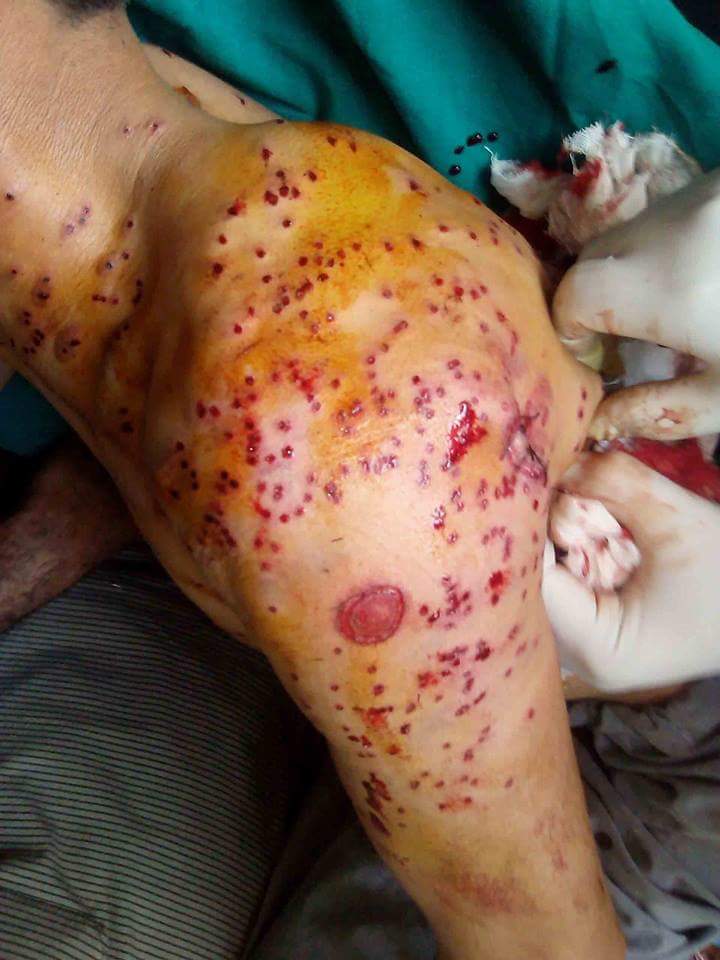
Kashmiri body: the turf of India's greedy nationalism etched in pellets [the non-lethal] #KashmirCrisis: image via Ather Zia @aziakashmir, 5 September 2016

Future blinds of Kashmir (pellet terror) @lookaround81 @UN @ajplus @AJStream #hospital: image via Faisal Khan @lookaround81, 5 September 2016

Kashmiri body: the turf of India's greedy nationalism etched in pellets [the non-lethal] #KashmirCrisis: image via Ather Zia @aziakashmir, 5 September 2016
Azadi Revenant
Protesting against Indian Occupation in Kashmir: photo by Danish Ismail / Reuters via The Huffington Post, 31 August 2016
Azadi Resurrected: A Referendum In Blood: Ather Zia, 21 August 2016
As I write this, it is the 51st
day of protests in Kashmir. The number of those killed by the Indian
forces is 69+; the injured are more than 8500; more than 570 have had
their eyes ruptured by pellet shotguns. Not all of those killed and
maimed were active protestors. The internet and pre-paid mobile phone
services continue to be blocked. Towards the last week of August, the
day curfew intensified and night curfew was also effective. Newspapers
were forced to cease publishing as the PDP-BJP government grappled with
the burgeoning protests. Facebook also blocked and censored many users
posting about the Kashmir situation. To combat the rising protests, the
government brought in the Border Security Force, which re-entered
Srinagar after 11 years. All these events followed the killing of Burhan
Wani,
a 21-year-old Hizbul Mujahideen fighter who was killed on 7 July 2016.
Burhan, who hailed from a well-to-do educated family, was seen as the
face of the indigenous Kashmiri movement for self-determination.
The
Valley has been witnessing an increasing surge in anti-India and
pro-freedom demonstrations. Hospitals have become war zones;
medical supplies are falling short and doctors are working overtime.
The air in the Valley is laden with chilli and pepper gas. People on
foot, on bikes and buses call the "Chalo", a name given to freedom
marches towards destinations such as shrines or popular landmarks.
Women's participation in the current uprising has been vigorous, and
creative. To the extent that Muzaffar Beg of the PDP said that the night
curfew was being imposed because women were organizing protests
after-hours when finished with household chores. The Kashmiri Sikh
community has joined the freedom marches as well.
Kashmiris are in the full swing of a pure unfettered resistance to
India. The air is charged, and also desperate. The famed Azadi song of
Kashmir resonates in the rallies. Masjids are aflame with freedom songs
and eulogies for the maimed and killed. Songs exhorting the revolution
from the early 90s have made a comeback, while new lyrics and slogans
are being stringed to reflect the present moment. Night vigils, defying
curfews, are organized in neighbourhoods. Soup kitchens are in full go
to help communities tide over food shortages; others address the gap in
medicine supply and aid the wounded and sick in the hospitals.
Neighbourhood "curfew schools" are keeping kids abreast with their study
curriculum. The Kashmiri diaspora is rallying around consulates
globally, and is engaged in on-the-ground and social media campaigns.
What had started as demonstrations and in-absentia funeral prayers for
Burhan has ended up becoming a full-blown uprising that continues till
date. It seems that revolution in Kashmir is always brimming beneath the
surface and the demand for Azadi is a livewire; never "not active."
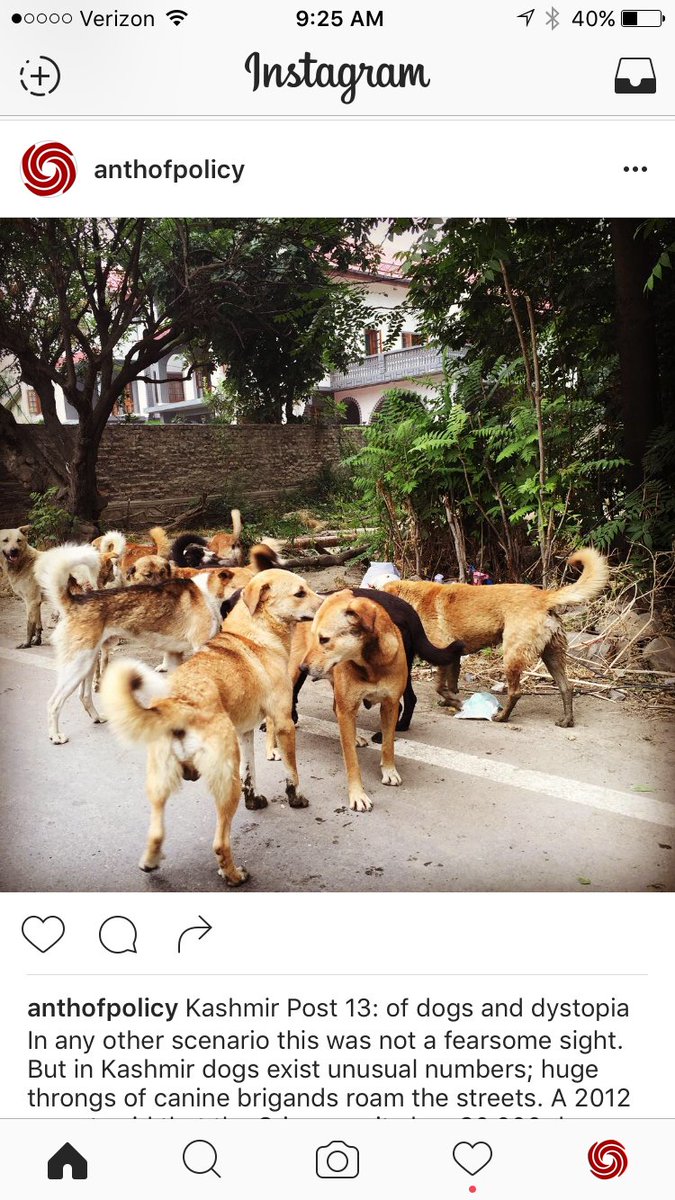
Post 13: of dogs and dystopia @WennerGrenOrg @AmericanAnthro @drmfirdosi @Evilsickularist: image via Ather Zia @aziakashmir, 13 August

Post 13: of dogs and dystopia @WennerGrenOrg @AmericanAnthro @drmfirdosi @Evilsickularist: image via Ather Zia @aziakashmir, 13 August
Zareef Ahmad Zareef: Quatrains on the 2016 Uprising in Kashmir
Tchu Misri
Dilawar syean temney kith shather chem
pyemeth watnass mye yem tosas ae’ther chem
Che yem azeh myeni chamneik posh putchnan
Temen muleh kadneh dramit yemh pothar chem
pyemeth watnass mye yem tosas ae’ther chem
Che yem azeh myeni chamneik posh putchnan
Temen muleh kadneh dramit yemh pothar chem
Karneh wadoah wai petran gam te doakh
Loleh watnass khuneh sagwaan lala roakh
Yemeh dilawar azaeh che paghas gashraaan
Raeatch pateh pholeh noor sahruk jal wet’chak
Loleh watnass khuneh sagwaan lala roakh
Yemeh dilawar azaeh che paghas gashraaan
Raeatch pateh pholeh noor sahruk jal wet’chak
Che yem karaan gulmoeth watnass touth zuw
Hum wanan yemney che sangbaaz jangju
Kanni yihinz batheh tchani tyankan, mandche gun
tauf khanan shurr mokabaleh doo-ba-du
Hum wanan yemney che sangbaaz jangju
Kanni yihinz batheh tchani tyankan, mandche gun
tauf khanan shurr mokabaleh doo-ba-du
Waq chu azmawaan akher poz pazan
Gaeb manz ditch hatfi Sabena azaan
Akh banth Haq mangni ase dramit che az
Houl gandith khutoon shurr peero jawaan
Gaeb manz ditch hatfi Sabena azaan
Akh banth Haq mangni ase dramit che az
Houl gandith khutoon shurr peero jawaan
Khasaan Akhtab chum daden atchaan zoow
Khamaan zalim gatchan pretthh tarfeh hoo hoo
Karew kotah zulum aseh-seeth manddchew
Magar temeh pateh te dyun aseh haq panun chyuww
Khamaan zalim gatchan pretthh tarfeh hoo hoo
Karew kotah zulum aseh-seeth manddchew
Magar temeh pateh te dyun aseh haq panun chyuww
Quatrains
Our brave-hearts are formidable adversaries to them
Those who ate through my land [like moths through pashmina]
Those who today are crushing the flowers of my garden
My sons are out to uproot them
Those who ate through my land [like moths through pashmina]
Those who today are crushing the flowers of my garden
My sons are out to uproot them
Why would I not lament, and suffer these agonies
My beloved land watered by blood of the flower-faced ones
Those bravehearts are lighting our tomorrow
After this night, there will be a dawn, you will soon see
My beloved land watered by blood of the flower-faced ones
Those bravehearts are lighting our tomorrow
After this night, there will be a dawn, you will soon see
They [who] are gifting life to their country
Those [enemy's] are calling them stone-throwers-militants
Their stones will dent their tanks; their guns will be shamefaced
Their [enemies] arsenals are facing my thronging young children
Those [enemy's] are calling them stone-throwers-militants
Their stones will dent their tanks; their guns will be shamefaced
Their [enemies] arsenals are facing my thronging young children
Time tests, but truth comes through
Hatfi, the helper from the Unseen, has called for prayers
Becoming one people today, we have called for our right
Battle-ready; women, children, old and youth
Hatfi, the helper from the Unseen, has called for prayers
Becoming one people today, we have called for our right
Battle-ready; women, children, old and youth
My ailments resurrect with the rising sun
As the tyrant bellows, laments resound all round me
Tyranny that you dispense on us will shame you
Despite everything, you will have to give us our right
As the tyrant bellows, laments resound all round me
Tyranny that you dispense on us will shame you
Despite everything, you will have to give us our right
Original Nazm by Zareef Ahmad Zareef, translated by Ather Zia, via Kashmir Lit, 5 September 2016
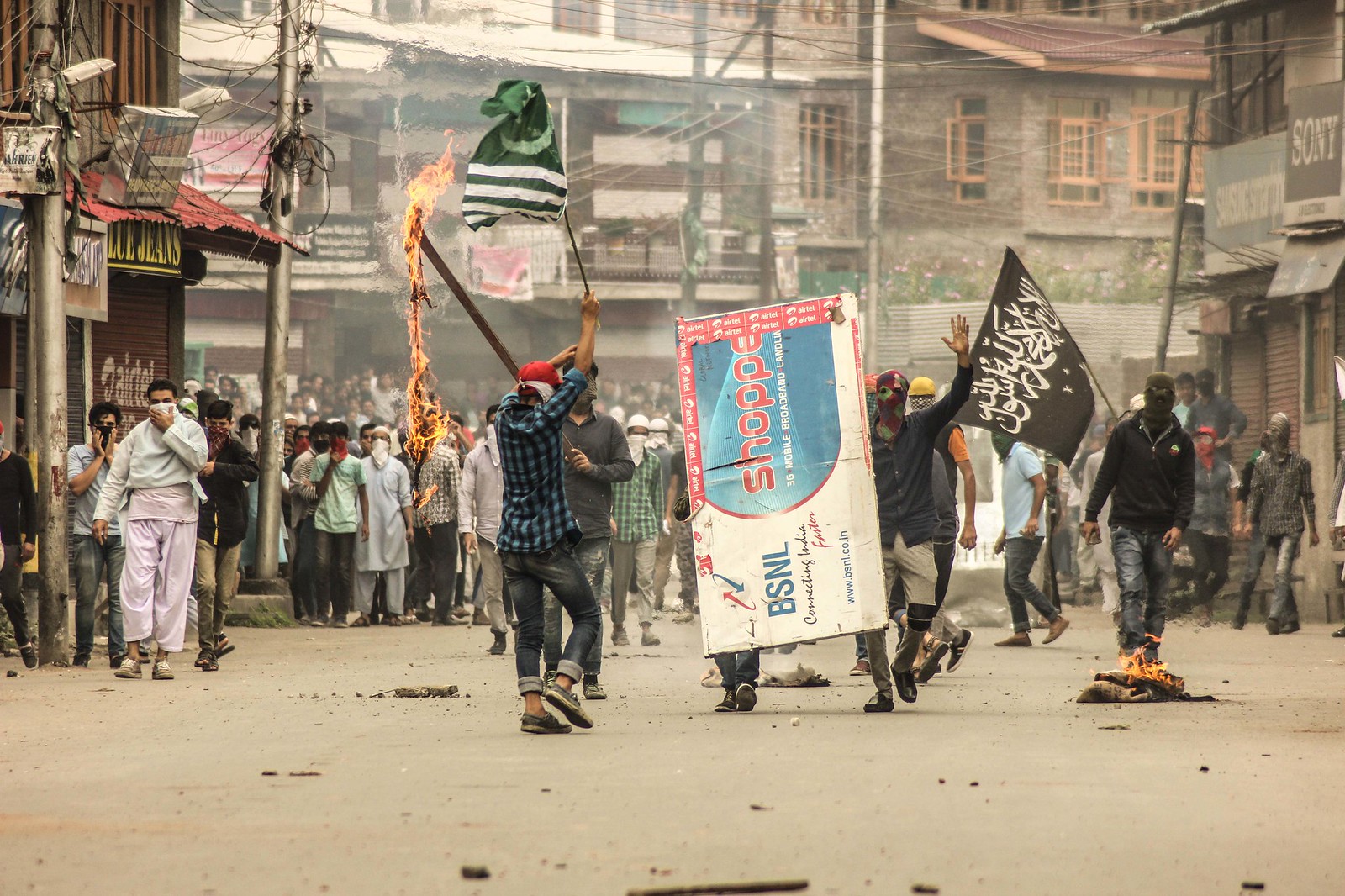
A day after fresh killings and widespread protests, authorities on Wednesday imposed curfew in some parts of the Valley intended to keep people from going out on to the roads: photo by bhat ajaz, 1 September 2016
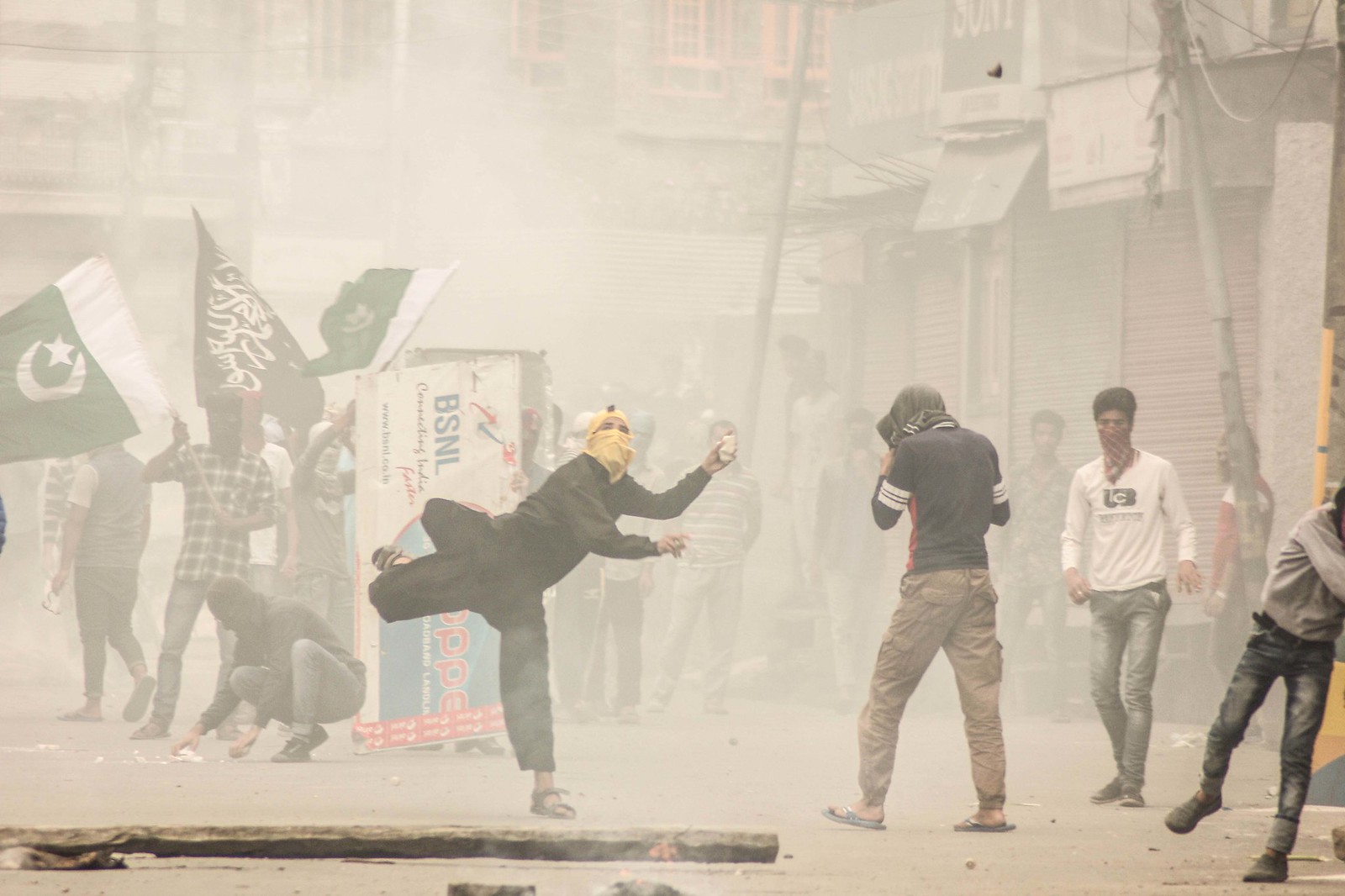
A day after fresh killings and widespread protests, authorities on Wednesday imposed curfew in some parts of the Valley intended to keep people from going out on to the roads: photo by bhat ajaz, 1 September 2016
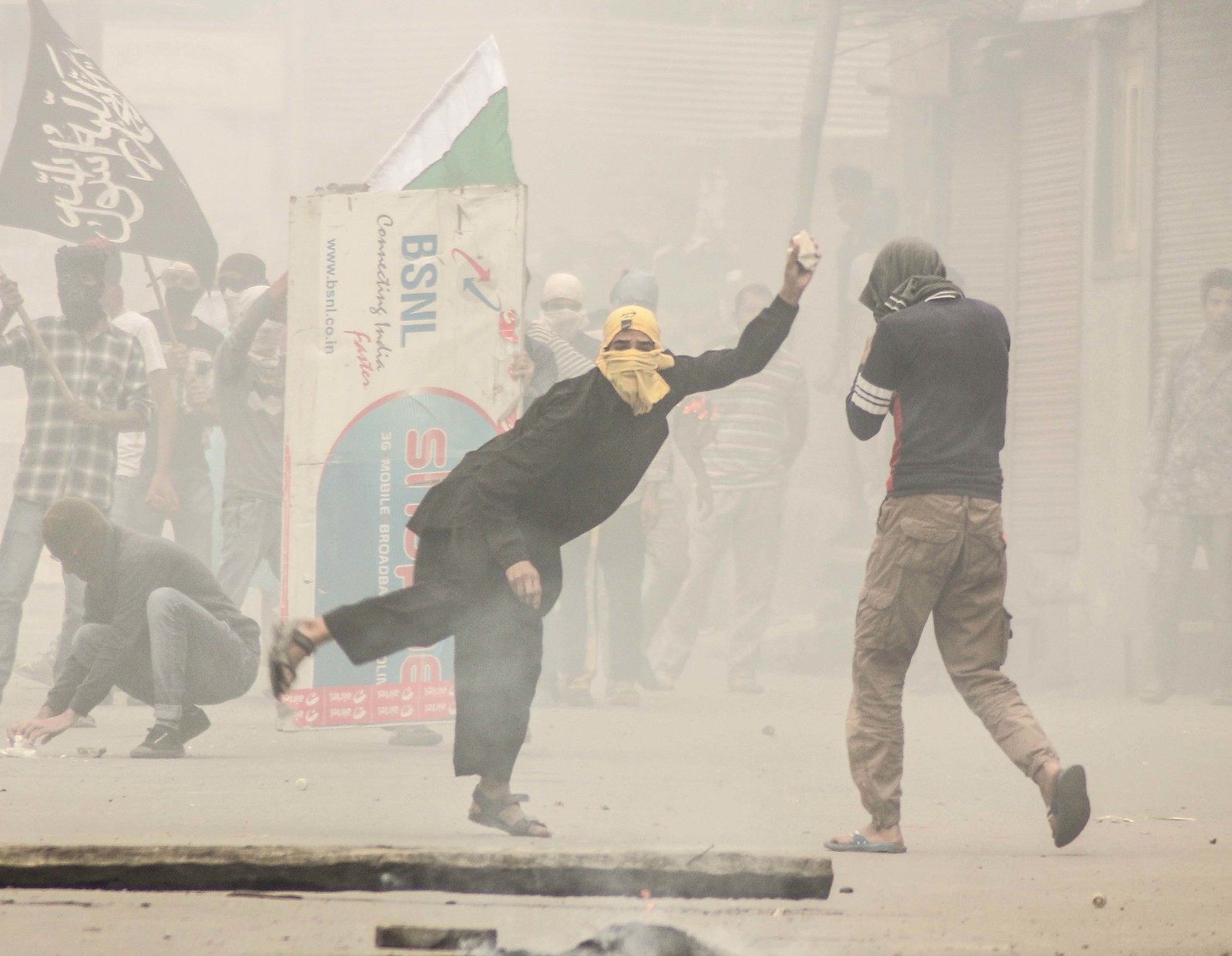
A day after fresh killings and widespread protests, authorities on Wednesday imposed curfew in some parts of the Valley intended to keep people from going out on to the roads: photo by bhat ajaz, 1 September 2016
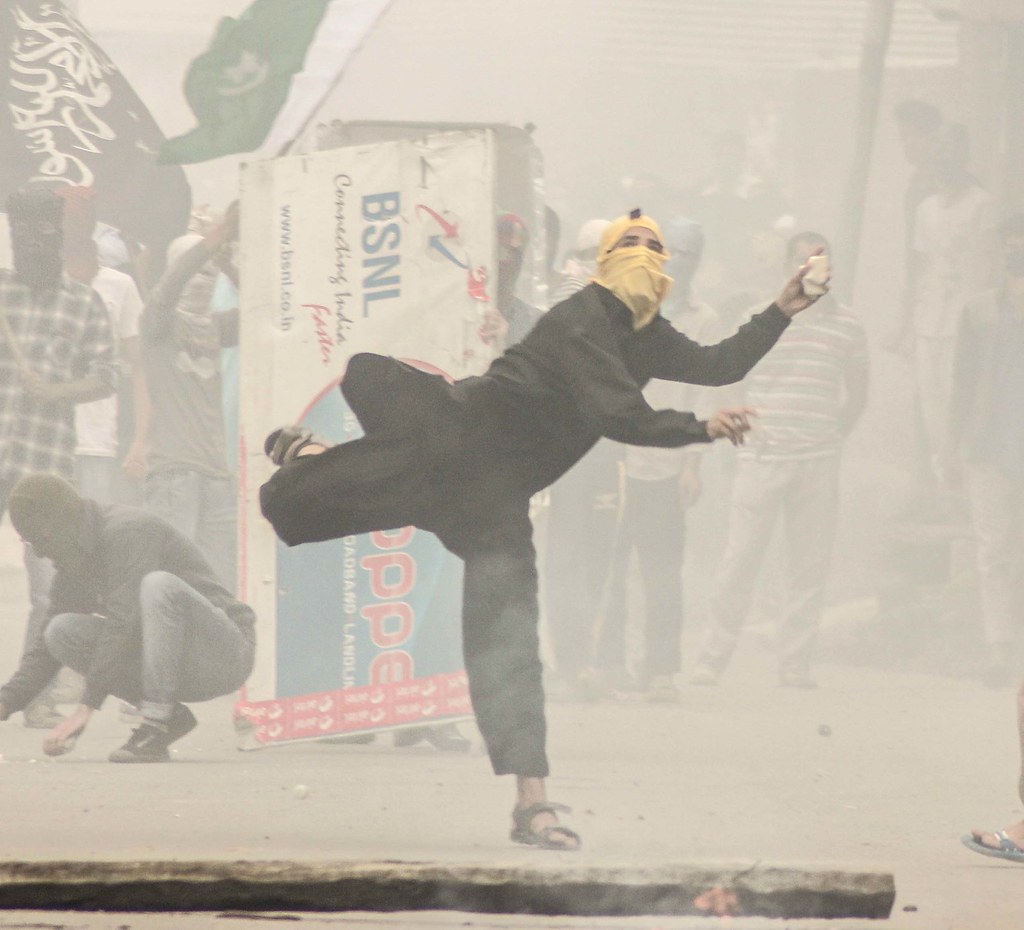
A day after fresh killings and widespread protests, authorities on Wednesday imposed curfew in some parts of the Valley intended to keep people from going out on to the roads: photo by bhat ajaz, 1 September 2016

A day after fresh killings and widespread protests, authorities on Wednesday imposed curfew in some parts of the Valley intended to keep people from going out on to the roads: photo by bhat ajaz, 1 September 2016
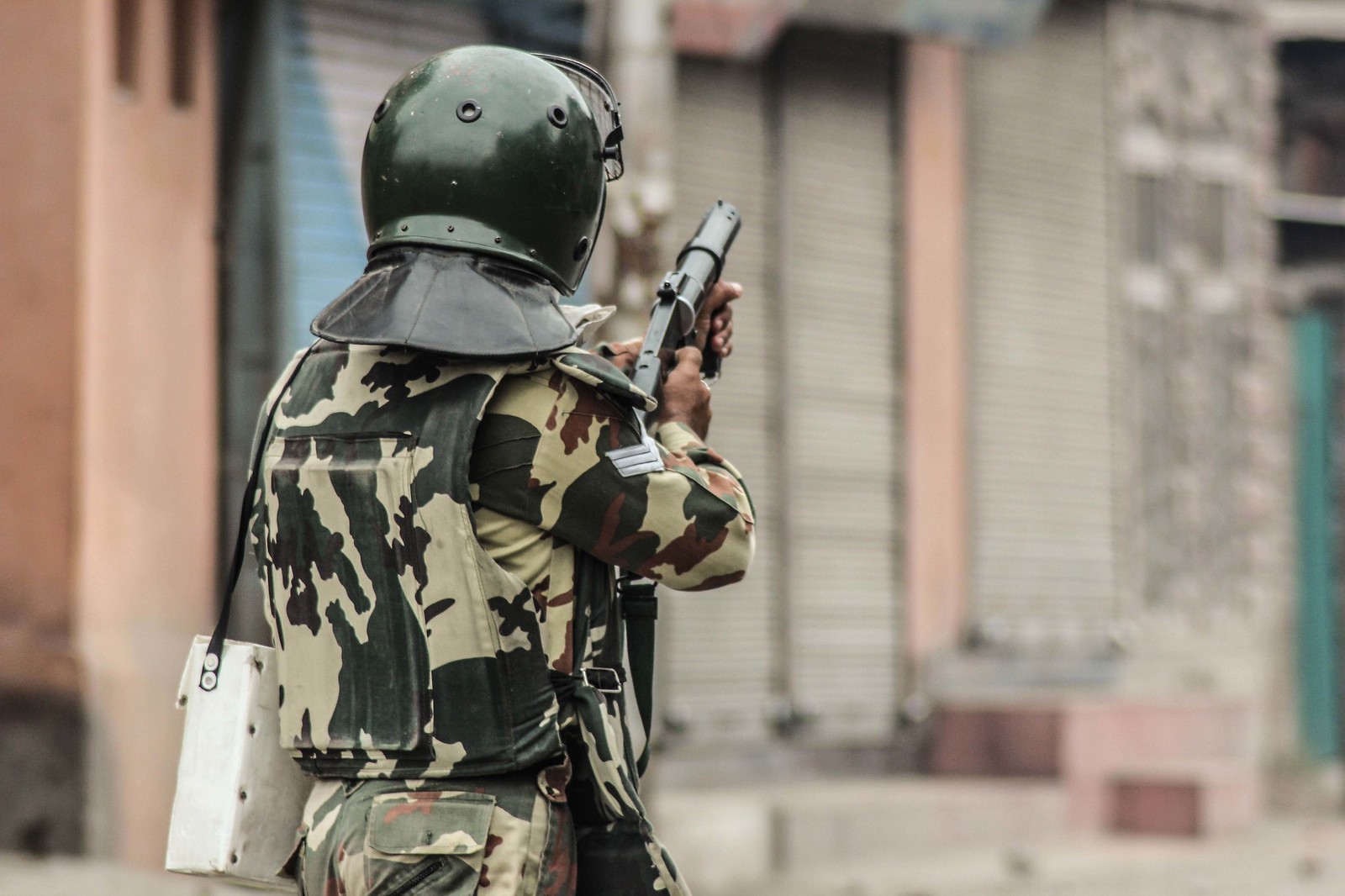

A day after fresh killings and widespread protests, authorities on Wednesday imposed curfew in some parts of the Valley intended to keep people from going out on to the roads: photo by bhat ajaz, 1 September 2016
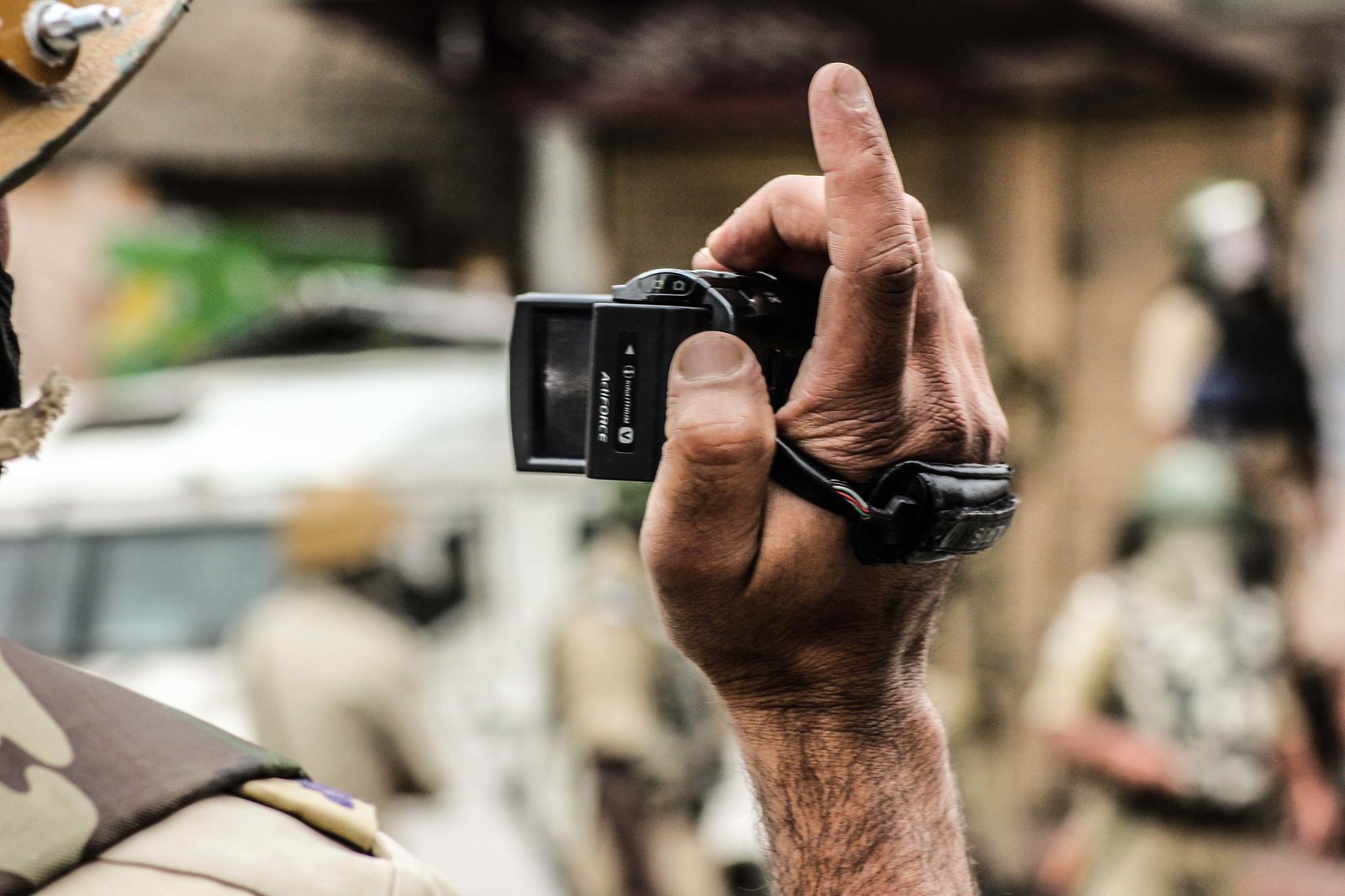
A day after fresh killings and widespread protests, authorities on Wednesday imposed curfew in some parts of the Valley intended to keep people from going out on to the roads: photo by bhat ajaz, 1 September 2016


A day after fresh killings and widespread protests, authorities on Wednesday imposed curfew in some parts of the Valley intended to keep people from going out on to the roads: photo by bhat ajaz, 1 September 2016

A day after fresh killings and widespread protests, authorities on Wednesday imposed curfew in some parts of the Valley intended to keep people from going out on to the roads: photo by bhat ajaz, 1 September 2016

A day after fresh killings and widespread protests, authorities on Wednesday imposed curfew in some parts of the Valley intended to keep people from going out on to the roads: photo by bhat ajaz, 1 September 2016

A day after fresh killings and widespread protests, authorities on Wednesday imposed curfew in some parts of the Valley intended to keep people from going out on to the roads: photo by bhat ajaz, 1 September 2016

A day after fresh killings and widespread protests, authorities on Wednesday imposed curfew in some parts of the Valley intended to keep people from going out on to the roads: photo by bhat ajaz, 1 September 2016

A
day after fresh killings and widespread protests, authorities on
Wednesday imposed curfew in some parts of the Valley intended to keep
people from going out on to the roads: photo by bhat ajaz, 1 September 2016

A day after fresh killings and widespread protests, authorities on Wednesday imposed curfew in some parts of the Valley intended to keep people from going out on to the roads: photo by bhat ajaz, 1 September 2016

A day after fresh killings and widespread protests, authorities on Wednesday imposed curfew in some parts of the Valley intended to keep people from going out on to the roads: photo by bhat ajaz, 1 September 2016
A journey into the abode of crows
Sara
Begum says that she was beaten by local police officers who came to her
home in the Goriwan neighbourhood looking for her youngest son, a known
protester: photo by Zahid Rafiq/Al Jazeera, 15 July 2016
It is early morning on Wednesday and for a while it seems that no one lives here. Doors and windows are closed. There are only the ravens, dozens and dozens of them, and the silence.
It is in this Kawpoor neighbourhood, whose name literally means the abode of crows, of Bumdoor village -- where clusters of small houses lie imposingly between orchards, streams and vast paddy fields -- that the rebellion that has overtaken the whole of Kashmir in the past week started last Friday night.
On a narrow path that leads from the main road to the houses, a rectangle of stones, sticks and yarn, with black and green flags at the corners, marks the spot where the 22-year-old Kashmiri rebel fighter Burhan Wani was killed. It has become a place of pilgrimage.
"No one ever visited here till last week. Nothing ever happened in this village," says Showkat Ahmad, a 24-year-old engineering student. "But for the last five days, more than a thousand people from all over visit here every day to see where Burhan was martyred."
Ahmad says the gun battle in which Burhan was killed was the first he had ever witnessed in this quiet village. Everyone seems surprised by it, and among the villagers there is an uncomfortable silence. They see accusations in the eyes of those who visit.
"They think we didn't try to save them … that we didn't throw stones at the soldiers and give cover to Burhan and the two other martyrs," says Ahmad. "But we had no idea they were here and by the time we knew it, it was very late."
The villagers say that the Indian soldiers and the police started arriving in the village at around noon on Friday, but they behaved in such a way that no one suspected something was amiss.
Abdul Gani Dar lives just across from the house where the three fighters had spent the night on Thursday and the day on Friday. It is a large house, a section of which belonged to an uncle of one of the fighters killed in the gun battle, Sartaj Ahmad Sheikh.
"The soldiers told us that Mehbooba Mufti [the chief minister of Indian-administered Kashmir] was coming to the nearby orchard to inaugurate something. And we went on with our day at the fields and in the orchards," he says.
By 4pm, more than a hundred Indian soldiers and police had cordoned off the Kawpoor neighbourhood. Some had taken positions in the partially built houses, some in empty cement drains, others in public bathrooms or behind trees.
"At around 5.30pm, Sheikh was the first to walk out of the gates of the house. He was shot dead right there," says a neighbour who asked not to be named. "A few moments later,
Burhan and Parvez -- the two other militants -- emerged from the house and they ran for around 25 metres and then they too were shot dead."
Soon after the three were killed, hundreds of villagers came out and clashed with the police. Scores were wounded.
By evening, when the news had spread that one of those killed was Burhan Wani, the Hizb-ul Mujahideen commander who had been widely credited with reviving armed resistance to Indian control of the disputed region, people began to come out on to the streets across Indian-administered Kashmir.
On Saturday morning, an estimated 200,000 people attended his funeral prayers in Tral. By the time he was buried, Indian-administered Kashmir was in the throes of yet another rebellion.
On Saturday, the first day of the uprising, at least 15 civilian protesters were killed and more than 200 wounded in firing by the Indian armed forces.
According to Indian police, police stations, posts and military camps were attacked, with many set ablaze.
A curfew was imposed in all four districts of the southern part of the region, the phone network and the internet was shut down.
For five days no journalists could make it here: afraid not only of the Indian forces but also of angry residents who believe the Indian media has distorted their stories.
At midday on Wednesday, a strict curfew is in place. Indian forces stand in small groups along the roads or sit on the pavements, making sure that nothing moves. An elderly couple trudge along the road, each carrying a sack.
A journey into the heart of Kashmir's crisis: Along roads controlled by protesters and towns patrolled by Indian troops into hospital wards filled with pain: Zahid Rafiq, Al Jazeera, 15 July 2016
Bumdoor/Anantnag, Indian-administered Kashmir - Aside from the black ravens that kraaw from every tin roof in Kawpoor, there is complete silence.
It is early morning on Wednesday and for a while it seems that no one lives here. Doors and windows are closed. There are only the ravens, dozens and dozens of them, and the silence.
It is in this Kawpoor neighbourhood, whose name literally means the abode of crows, of Bumdoor village -- where clusters of small houses lie imposingly between orchards, streams and vast paddy fields -- that the rebellion that has overtaken the whole of Kashmir in the past week started last Friday night.
On a narrow path that leads from the main road to the houses, a rectangle of stones, sticks and yarn, with black and green flags at the corners, marks the spot where the 22-year-old Kashmiri rebel fighter Burhan Wani was killed. It has become a place of pilgrimage.
"No one ever visited here till last week. Nothing ever happened in this village," says Showkat Ahmad, a 24-year-old engineering student. "But for the last five days, more than a thousand people from all over visit here every day to see where Burhan was martyred."
Ahmad says the gun battle in which Burhan was killed was the first he had ever witnessed in this quiet village. Everyone seems surprised by it, and among the villagers there is an uncomfortable silence. They see accusations in the eyes of those who visit.
"They think we didn't try to save them … that we didn't throw stones at the soldiers and give cover to Burhan and the two other martyrs," says Ahmad. "But we had no idea they were here and by the time we knew it, it was very late."
The villagers say that the Indian soldiers and the police started arriving in the village at around noon on Friday, but they behaved in such a way that no one suspected something was amiss.
Abdul Gani Dar lives just across from the house where the three fighters had spent the night on Thursday and the day on Friday. It is a large house, a section of which belonged to an uncle of one of the fighters killed in the gun battle, Sartaj Ahmad Sheikh.
"The soldiers told us that Mehbooba Mufti [the chief minister of Indian-administered Kashmir] was coming to the nearby orchard to inaugurate something. And we went on with our day at the fields and in the orchards," he says.
By 4pm, more than a hundred Indian soldiers and police had cordoned off the Kawpoor neighbourhood. Some had taken positions in the partially built houses, some in empty cement drains, others in public bathrooms or behind trees.
"At around 5.30pm, Sheikh was the first to walk out of the gates of the house. He was shot dead right there," says a neighbour who asked not to be named. "A few moments later,
Burhan and Parvez -- the two other militants -- emerged from the house and they ran for around 25 metres and then they too were shot dead."
Soon after the three were killed, hundreds of villagers came out and clashed with the police. Scores were wounded.
By evening, when the news had spread that one of those killed was Burhan Wani, the Hizb-ul Mujahideen commander who had been widely credited with reviving armed resistance to Indian control of the disputed region, people began to come out on to the streets across Indian-administered Kashmir.
The face of armed rebellion
Wani had picked up a gun in 2010 as a 15-year-old boy. But
unlike other fighters, he did not choose an alias or conceal his
identity. Instead, he posted pictures and videos of himself on social
media platforms such as Facebook and, in so doing, appealed to a new
generation of Kashmiris, bringing the armed resistance back into the
public imagination. Wani became a household name.
On Saturday morning, an estimated 200,000 people attended his funeral prayers in Tral. By the time he was buried, Indian-administered Kashmir was in the throes of yet another rebellion.
On Saturday, the first day of the uprising, at least 15 civilian protesters were killed and more than 200 wounded in firing by the Indian armed forces.
According to Indian police, police stations, posts and military camps were attacked, with many set ablaze.
A curfew was imposed in all four districts of the southern part of the region, the phone network and the internet was shut down.
Into the darkness
A kind of darkness has descended on Indian-administered Kashmir, punctuated by the sounds of gunshots and ambulance sirens. The south of the region has been at the heart of that darkness.For five days no journalists could make it here: afraid not only of the Indian forces but also of angry residents who believe the Indian media has distorted their stories.
Myself and a colleague, working with an Indian newspaper,
became the first journalists to travel through the southern part of the
region, along stretches of highway and interior roads controlled by
young civilian protesters and through major towns under a curfew imposed
by hundreds of Indian troops.
Along our route, house windows are shattered. Stones, tree
trunks and rocks litter roads smeared orange by the bricks young boys
throw at the Indian forces.
At midday on Wednesday, a strict curfew is in place. Indian forces stand in small groups along the roads or sit on the pavements, making sure that nothing moves. An elderly couple trudge along the road, each carrying a sack.
"Were you throwing stones yesterday?" an Indian soldier asks the old man.
"No, I have to take my wife to hospital. She has fever and urine infection," he replies.
"I think I saw you throwing stones yesterday. Now you try to
appear all old and feeble but yesterday there were dozens of old men
with white beards throwing stones," the soldier tells him.
A district administration officer in Anantnag, speaking on
condition of anonymity, told Al Jazeera that such a curfew is intended
to pressure people into pleading with those protesting to stop so that
the curfew might be lifted.
"That is the way that has been decided. Starve them. Let the
parents beg their young sons to give up and we could return to
normality," the officer said.
"I am in pain. I am in pain," he sobs.
Saeem was shot by the police on Monday. Three bullets hit his left leg, shattering the bones in his foot and shin.
On another bed, across the aisle from Saeem is 46-year-old Masooda, a mother of four daughters, the youngest of whom is seven.
She endures her pain quietly. Her hip hurts, she says, and so does her back and her shoulders.
"I was walking in our lane in Ashajipora when the police and the CRP [the Central Reserve Police Force] came and I tried to run but I fell down in pain," Masooda says.
A bullet pierced her upper thigh and then, she says, police came and beat her, her husband and two of her daughters.
"I was bleeding and crying and many of them came and put me in a cart that was there and then they beat me with sticks from all sides. Then they overturned the cart and tried to drag me into one of the houses while they kept beating me," she says.
Her two daughters and husband were beaten as they tried to protect her, she adds.
She doesn't remember how she got to the hospital.
Of the roughly 30 patients in the ward, eight are women and the oldest among them is 79-year-old Sara Begum.
She says that she was beaten by local police officers who came to her home in the Goriwan neighbourhood looking for her youngest son, a known protester.
Her right leg is swollen and bruised from the ankle to the knee. Her other leg has 13 stitches.
"They beat me up as if they couldn't see that I was a sick old woman. One of them spread me on the floor and climbed on my chest," she murmurs.
Her grandson, Mohammad Asif, says the policemen beat her with a wooden meat-tenderiser that they found lying around.
"They beat up all the women in the house. They stripped my 12-year-old sister completely naked," says another grandson, 15-year-old Umar. "I wish I was in the house, I only wish. For three nights, I have not slept. The image of my sister naked haunts me. It won't let me sleep. For the last three days, I have only thought of murdering the policemen who stripped my sister."
With each story like this, along with the well known protesters who the police lock up every time an uprising seems imminent, hundreds such as Umar are moved to join the protests for the first time in their lives.
Outside the hospital I meet Zubair, a volunteer at a free medical camp. In the middle of our conversation about the differences in the protests this time, he absent-mindedly lifts his blue T-shirt to scratch at the small holes made by the pellet guns the Indian forces use to contain the protests.
"This time," he says, "people had no demands. Nothing … they did not seek a reform in a law, a probe in a case, nothing at all. It was a mourning of Burhan's death or rather a celebration of Burhan's life. But more than that," he says, "it was the time we repeated the word Azadi [freedom] again."
But the question remains whether, as in 2008 and 2010, a fragile normalcy will again settle upon this restive region or if, this time, things will be any different.
As of now, with no other response to the people's rebellion from the Indian government other than force and with a lack of ideas among the region's resistance leadership, the past week -- with at least 35 civilians killed and more than 1,600 seriously wounded -- appears to be yet another dark chapter in the book of Kashmir's recent history.
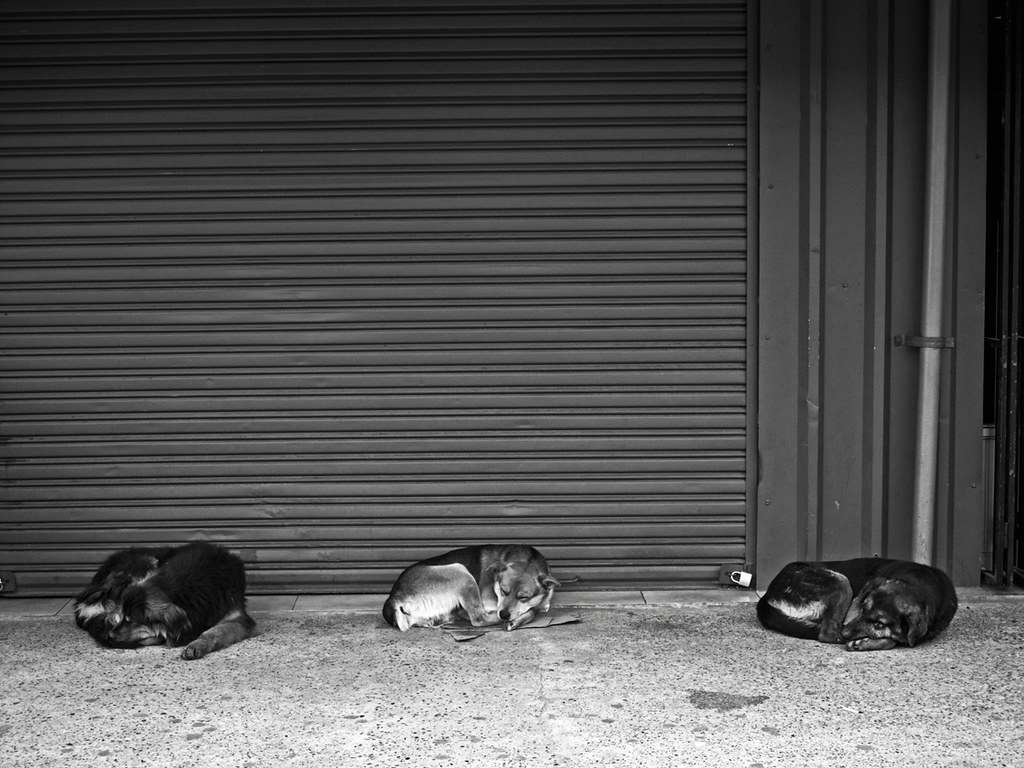
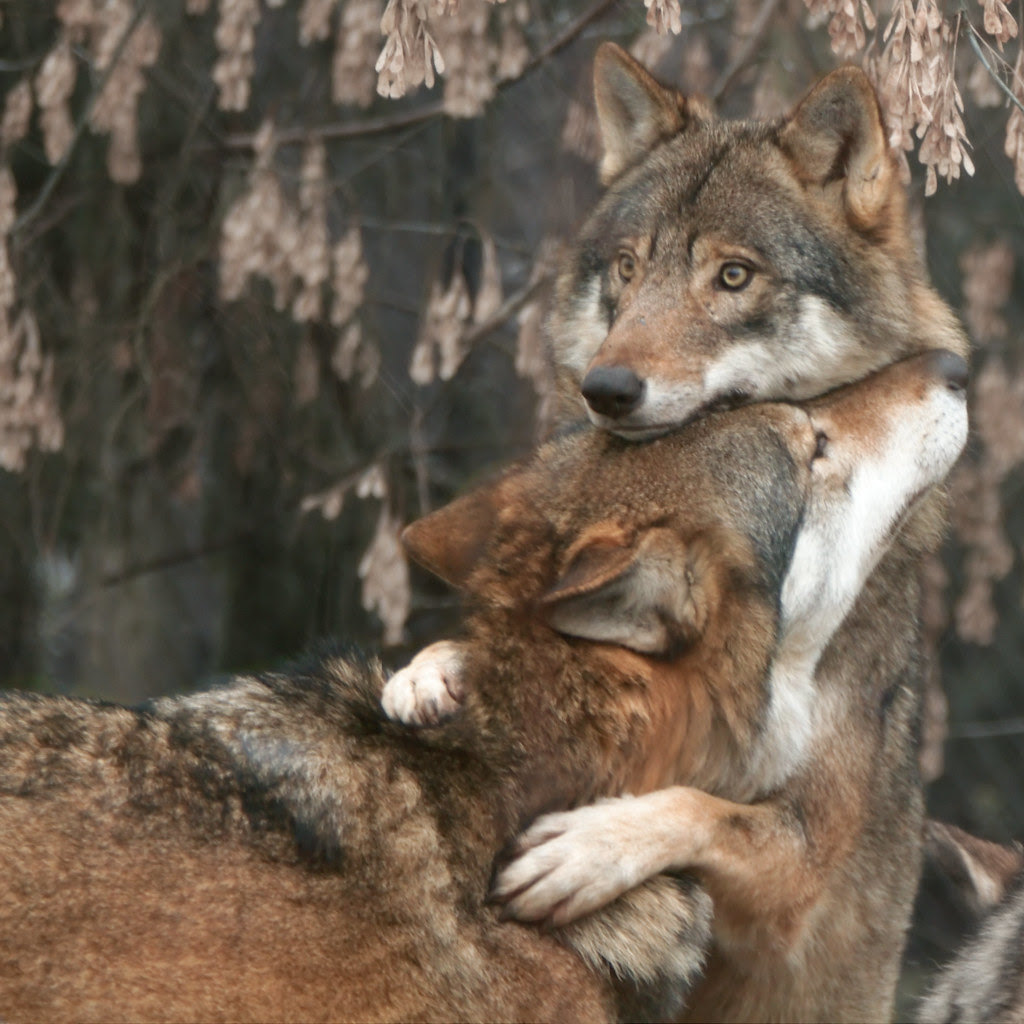

Gray Wolf (Canis lupus) stretching in his enclosure, Zurich Zoo: photo by Tamako the Tiger, 1 November 2013

Workers and Saudi security forces make the Fajr prayer before sunrise, outside the Grand Mosque in the Muslim holy city of Mecca, Saudi Arabia. Millions of pilgrims have arrived to Mecca ahead of the Hajj annual pilgrimage which begins on Saturday.: photo by Nariman El-Mofty/AP, 8 September 2016
Workers and Saudi security forces make the Fajr prayer before sunrise, outside the Grand Mosque in the Muslim holy city of Mecca, Saudi Arabia. Millions of pilgrims have arrived to Mecca ahead of the Hajj annual pilgrimage which begins on Saturday.: photo by Nariman El-Mofty/AP, 8 September 2016
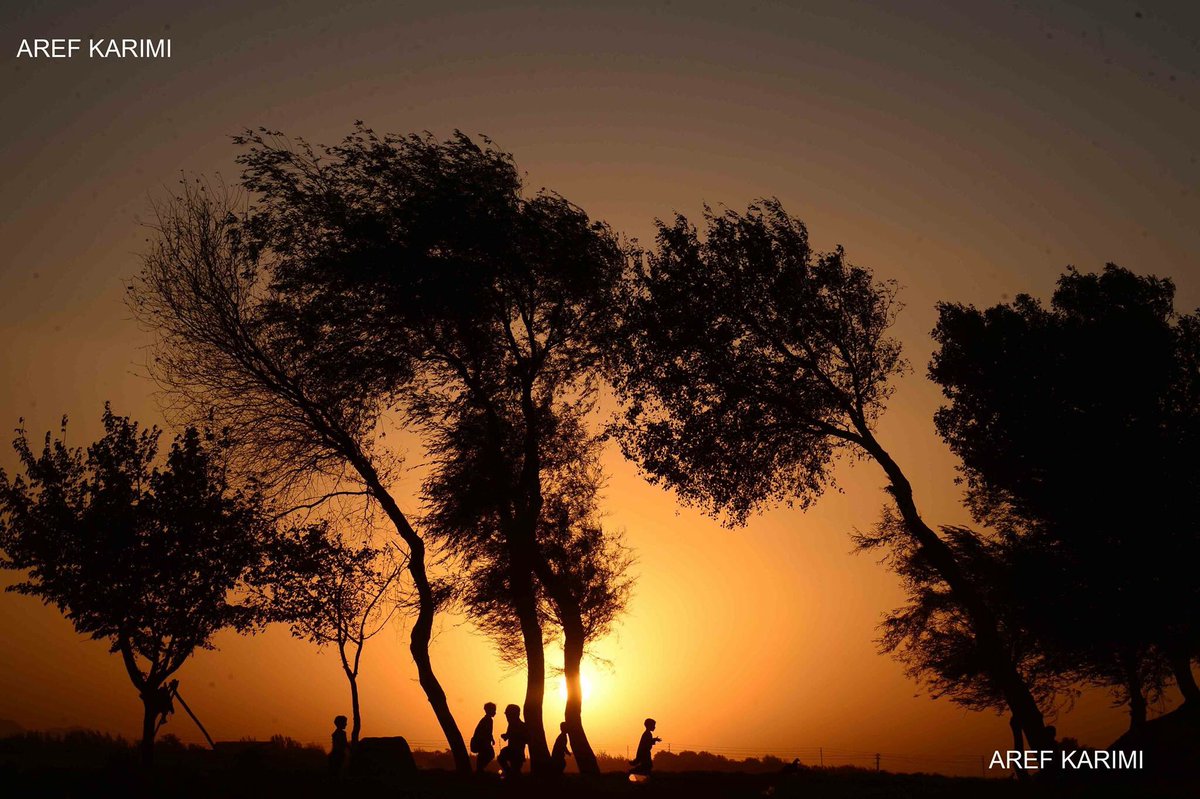
A journey into the heart of Kashmir's crisis
In the post-operation ward of the Anantnag District Hospital,
17-year-old Mohammad Saeem's cries pierce the stale air. He is pleading
with his brother to cut the plaster on his leg.
"I am in pain. I am in pain," he sobs.
Saeem was shot by the police on Monday. Three bullets hit his left leg, shattering the bones in his foot and shin.
On another bed, across the aisle from Saeem is 46-year-old Masooda, a mother of four daughters, the youngest of whom is seven.
She endures her pain quietly. Her hip hurts, she says, and so does her back and her shoulders.
"I was walking in our lane in Ashajipora when the police and the CRP [the Central Reserve Police Force] came and I tried to run but I fell down in pain," Masooda says.
A bullet pierced her upper thigh and then, she says, police came and beat her, her husband and two of her daughters.
"I was bleeding and crying and many of them came and put me in a cart that was there and then they beat me with sticks from all sides. Then they overturned the cart and tried to drag me into one of the houses while they kept beating me," she says.
Her two daughters and husband were beaten as they tried to protect her, she adds.
She doesn't remember how she got to the hospital.
Of the roughly 30 patients in the ward, eight are women and the oldest among them is 79-year-old Sara Begum.
She says that she was beaten by local police officers who came to her home in the Goriwan neighbourhood looking for her youngest son, a known protester.
Her right leg is swollen and bruised from the ankle to the knee. Her other leg has 13 stitches.
"They beat me up as if they couldn't see that I was a sick old woman. One of them spread me on the floor and climbed on my chest," she murmurs.
Her grandson, Mohammad Asif, says the policemen beat her with a wooden meat-tenderiser that they found lying around.
"They beat up all the women in the house. They stripped my 12-year-old sister completely naked," says another grandson, 15-year-old Umar. "I wish I was in the house, I only wish. For three nights, I have not slept. The image of my sister naked haunts me. It won't let me sleep. For the last three days, I have only thought of murdering the policemen who stripped my sister."
With each story like this, along with the well known protesters who the police lock up every time an uprising seems imminent, hundreds such as Umar are moved to join the protests for the first time in their lives.
Outside the hospital I meet Zubair, a volunteer at a free medical camp. In the middle of our conversation about the differences in the protests this time, he absent-mindedly lifts his blue T-shirt to scratch at the small holes made by the pellet guns the Indian forces use to contain the protests.
"This time," he says, "people had no demands. Nothing … they did not seek a reform in a law, a probe in a case, nothing at all. It was a mourning of Burhan's death or rather a celebration of Burhan's life. But more than that," he says, "it was the time we repeated the word Azadi [freedom] again."
But the question remains whether, as in 2008 and 2010, a fragile normalcy will again settle upon this restive region or if, this time, things will be any different.
As of now, with no other response to the people's rebellion from the Indian government other than force and with a lack of ideas among the region's resistance leadership, the past week -- with at least 35 civilians killed and more than 1,600 seriously wounded -- appears to be yet another dark chapter in the book of Kashmir's recent history.

MONDO CANE 20. Talca, julio 2013: photo by Aldo Fontana, 17 July 2013

Grey Wolves (Canis lupus), Rotterdam Zoo: photo by Sander van der Wel, 15 January 2010

Gray Wolf (Canis lupus) stretching in his enclosure, Zurich Zoo: photo by Tamako the Tiger, 1 November 2013
Workers and Saudi security forces make the Fajr prayer before sunrise, outside the Grand Mosque in the Muslim holy city of Mecca, Saudi Arabia. Millions of pilgrims have arrived to Mecca ahead of the Hajj annual pilgrimage which begins on Saturday.: photo by Nariman El-Mofty/AP, 8 September 2016
Workers and Saudi security forces make the Fajr prayer before sunrise, outside the Grand Mosque in the Muslim holy city of Mecca, Saudi Arabia. Millions of pilgrims have arrived to Mecca ahead of the Hajj annual pilgrimage which begins on Saturday.: photo by Nariman El-Mofty/AP, 8 September 2016

#Afghanistan #sunset Children play on the outskirts of Herat August 2016 #AFP Photo by @Arefkarimi: image via Aurelia BAILLY @AureliaBAILLY, 8 September 2016

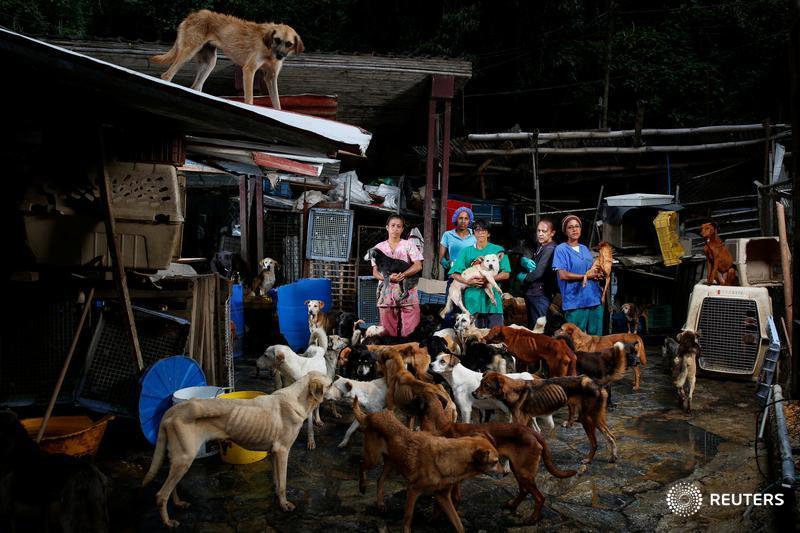
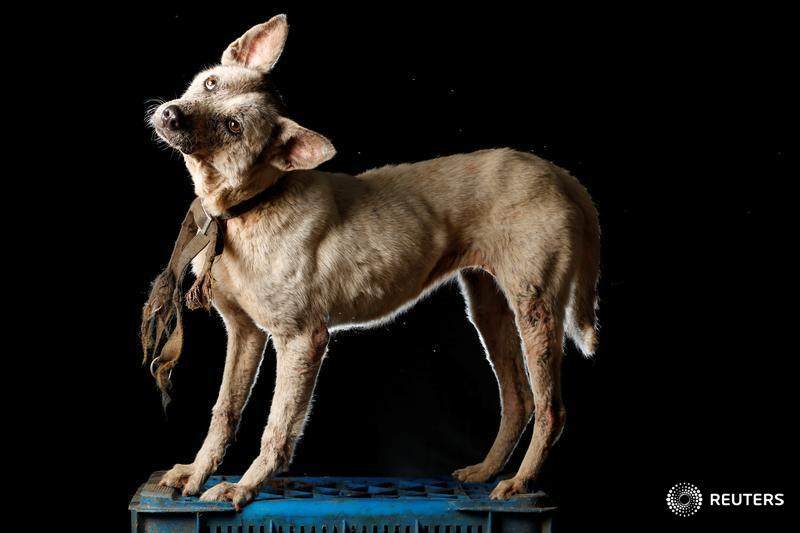
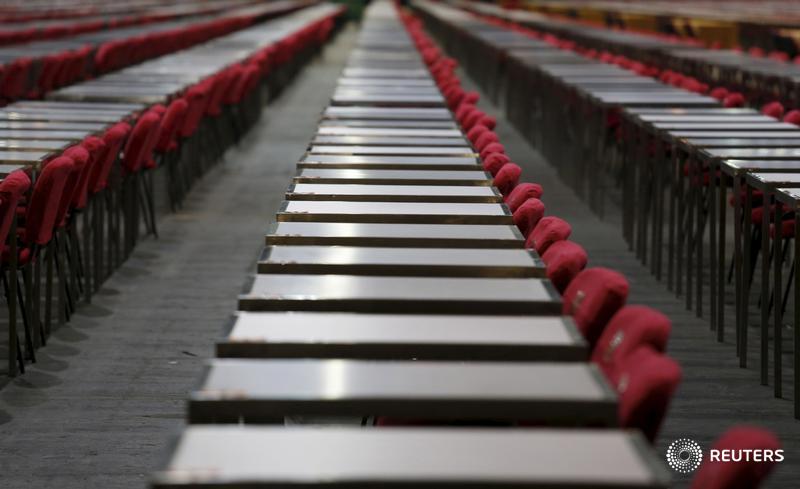




4 comments:
Tchu Misri – Quatrains on the 2016 Uprising in Kashmir, 03-09-2016 by Zareef Ahmad Zareef
maravilloso Borges...esa necesidad de dominar de arrasar...y también de resistir
Los Lobos: La Bamba, live at Watsonville CA HS football field, 11/26/89 (benefit for victims of Loma Prieta quake)
after reading borges' poem i found the following interesting
https://en.wikipedia.org/wiki/Wolves_in_Great_Britain
Post a Comment